Leadership
11 Reasons Why Empathy is a Core Leadership Trait
Empathy is simply “putting yourself in the other person’s shoes.” It strengthens the bond between people. It’s a rare quality to have in today’s organizations. Read all about it.


Empathy is simply “putting yourself in the other person’s shoes,” a straightforward definition at best, to say the very least. People often mistake sympathy for empathy, but they are two different concepts with some similarities. Sympathy is the ability to care for and understand another person’s sufferings or experiences, while empathy is the ability to feel their experiences. For instance, when a mother sees her child quiet and sitting on the ground, she may know what the child is going through and feel the same emotions by some level of deep emotional connection. A manager who sees one of his staff going through some difficult moments and responds with the right words and acts of care can show sympathy and transcend to the level of empathy.
“Empathy begins with understanding life from another person’s perspective. Nobody has an objective experience of reality. It’s all through our own individual prisms.” — Sterling K. Brown.
Empathy strengthens the bond between people. Leaders need this trait more than ever in a fast-paced world where feelings and human affection are gradually eroding. Most organizations today are driven by numbers of how the organization can add money to their bottom-line. The push for profit aggrandizement pushes aside all empathy as many organizations become heavily transactional. To these organizations, empathy is a sign of weakness. To them, there is no time to feel the emotions of their workers. However, there is always time to peel layer upon layer of profits to add to the bottom-line.
Empathy is a rare quality to have in today’s organizations. It is the hallmark of nurturing and sustainable leadership that still drives organizations’ profitability but does so from a culture of care. When a leader exudes this quality, he or she gains the respect, trust, and cooperation of his followers. Connecting with your workforce from a position of empathy creates a motivational ambiance that propels them to do their very best for that leader; hence, increasing productivity. Thus, at the workplace, their staff will feel loved; at the home front, children will feel loved and cared for and, most importantly, understood. In this article, I shall be addressing ten reasons and then some on why empathy is a core leadership trait.
#1. Empathy Helps You Define Purpose


Think about a company that doesn’t know what its customers want. A company that doesn’t ask their customers questions. An organization that is not sensitive to its customers’ experiences but keeps making a particular product or offering a service that its consumers are no longer willing to buy. Think of a teacher who keeps on giving explanations in a classroom of students where many of them are complaining of ill health, and he or she does nothing about it. There will be a disconnection. And when this happens, it will affect the purpose or mission of such a leader. Empathy helps leaders define the purpose of their organization.
#2. Empathy Elicits Support


When a leader shows empathy, it is likely to elicit his/her followers’ support and compliance. One of the underlying needs of man is the need to socialize. Followers want to know that they matter to their leadership. Empathy towards followers instills a sense of belonging and inspires motivation. When you show care and concern for people, you win their loyalty, love, and support. Followers tend to become more committed when they have a leader who shows concern for their feelings, needs and wants. Their commitment begins to wane when leaders are just highly official, diplomatic, and no more. An empathetic leader will evoke the support of his/her followers.
#3. Empathy Puts You in the Present


Leaders must remind themselves that it is their responsibility to take care of their people and their priority. To get better at this, you must keep observing and then connecting with your people in the present. That is where the leader’s empathy comes to play in the way they relate with their followers. The leader must be in the present to understand the emotional status quo of their followers. He/she must be here in the now with them. What makes them excited? What makes them feel bad or experience stress? When you develop your level of empathy, your subconscious mind rises to the occasion, and you can sense when your people are satisfied or dissatisfied with you per time.
#4. Empathy Helps Leaders Develop Emotional Intelligence (EI)


With empathy in place, you can develop your Emotional Intelligence (EI), which helps you in your relationship with people. According to Kendra Cherry, Emotional Intelligence (EI) refers to perceiving, controlling, and evaluating emotions. Emotional Intelligence (EI) creates a cycle of benefits. It improves decision-making, decreasing occupational stress, reducing staff turnover, increasing personal well-being, increasing leadership ability, and increasing team performance. Hence, with EI, you can understand people by their body language and the things they say, and you can act accordingly in the present without throwing things out of control. Without emotional intelligence in place, you may be doing things wrong, and people would never want to connect with you transparently to tell you where you’re getting it wrong as a leader.
#5. Empathy Builds Your Communication Skills
Every leader must know how to communicate clearly and effectively. Without this ability in place, it becomes challenging to meet and understand the needs of your people. When you develop empathy, you know just the right words to use in your communication with people under your care and control as their leader. Empathy will help you in building effective and potent communication skills. Far often than none, most leaders have been known to use harsh words on their followers, thinking that this is the way to get results, but this doesn’t last long. Being autocratic in communication will eventually erode the trust that your followers have in you as a leader.
#6. Empathy Makes You Prioritize the Needful


What matters most in life isn’t always the results, as people are prone to thinking. Prioritizing the needful is knowing what matters most. To the leader, what matters most is building and sustaining a connection with followers. The need for success in a family shouldn’t drive the head of the family to search for money at all cost disregarding his people’s feelings in the process. The need for success shouldn’t make a corporate leader disregard quality conversation. He shouldn’t ignore the need for connection with his followers to focus on profit scalability as if that’s all that matters in the long run. People love a leader who cares, not one who is money-driven only.
#7. Empathy Makes You More Human


Scientists have proved scientifically that our brains’ mirror neurons help us feel intuitive and even experience others’ feelings. What this shows is that every human being has the capacity for empathy. We are not robots; we are designed to feel. We are made to have compassion towards others. We all can grow our empathy towards others. Regrettably, not all leaders have been able to harness this ability. Leaders must begin to do this to bring to the fore this human part of them so that their followers will feel loved and cared for. Empathy fosters the growth of our humanistic tendencies. This, in turn, encourages more excellent followership that leads to greater productivity.
#8. Empathy Reduces Conflict


When a leader develops his empathy, it’s way easier for him to relate with his people effectively. It makes him know how to lead people in a way that reduces the possibility of endless conflict. A leader with empathy will find it easy to mediate or intervene between one staff and another in a dispute to bring about an agreement or reconciliation. That is the power resident in empathy and why it is a core leadership trait. It is an excellent diffuser of tension in organizations. With this good quality in place, he doesn’t jump into taking sides but considers both parties’ feelings and then intervenes wisely.
#9. Empathy Ensures A Good Legacy


When a leader leads his people with empathy, it is easier for them to continue with this standard even in his absence. People would be too willing to continue doing the right thing even in the leader’s absence. But when a leader is concerned only about profits, compliance, results, or numbers going to the bottom line, such a leader always leaves such an environment more tense than average. When they leave, the standard may fall below standard because people may react against the status quo and how things have been done. Hence, empathy will help a leader leave a good legacy after their tenure as a leader is long gone.
#10. Empathy Leads To Better Growth Trajectory


When there is empathy in place, people comply with leadership more quickly and give their best toward the growth of an organization, a system, or even a family setting. Followers in an ambiance full of empathy flowing from the leadership don’t feel like a number. Followers feel more like a number that the organization can easily get rid of in organizations that lack empathy. Growth may seem unbridled because of transactional leadership, but it will only be a matter of time before it all comes tumbling down like Humpty-Dumpty, who sat on the wall of his ego and seeming accomplishment. For instance, a father who loves his family and understands how they feel will be leading them aright, and they will, in turn, do the right thing by contributing their best to the organization’s growth. The same thing applies too in organizations apart from the family setting. Empathy is a crucial factor for leaders in the world today.
#11. Empathy Improves You
Finally, empathy improves you as a person. When a leader has empathy, it leads to a better him or her. The import of this is that he/she keeps working on this ability in them. They keep on tweaking this advantage to near mastery. While mastery is relative, it is something that each leader can arrive at in their own time. Sometimes, you may not be adept at it, but this should not get you worried or worked up, neither should it make you abdicate thinking that empathy isn’t worth it. Compassion is worth it all and then some. It is a continuous improvement éclair that helps you transcend to the heights of a one-of-a-kind leadership status. There are cases where your followers may want to take undue advantage of you due to how you empathize. Nonetheless, keep empathizing and don’t look track of the result. Empathy improves you—your only limit is your mind.


For someone to develop their empathy, there are certain qualities that they must build within themselves. They must work on their endurance level and self-awareness. Going forward, leaders should begin to observe and listen carefully to their people to get feedbacks per time so that they don’t treat their people with indifference or a lack of empathy. Be adept in developing the art and science of listening. Conversation or free speech should never be one-way traffic.
Another thing leaders must do is to eschew working on assumptions. Stop playing ignorant and telling yourself you don’t know how people think or are oblivious to what they say. Instead, start to observe appropriately so you’d get better at observing people. Also, ask questions. When your followers act strangely and don’t understand what they are saying or trying to communicate through their language, ask them if they are okay or have any issues. Another thing is to avoid distractions and be in the present, as I explained previously. Be there for your people, be there for your followers.


Empathy is a core leadership trait that you mustn’t play with. Understand this and keep working on yourself as a leader. Listen when your people are trying to communicate something to you. Don’t be too busy getting results and adding zeroes to your bottom line that you forget to know how your people are doing—to understand how they truly feel. Don’t get distracted to the point you don’t have time for your followers. Parents should listen to their children always and know what they are saying all the time, likewise corporate leaders.
“An exchange of empathy provides an entry point for a lot of people to see what healing feels like.” — Tarana Burke.
Sometimes when leaders multitask, it takes their mind away from effective and deep relationships with the people under their care. Parents who are too busy doing so many things in the rat race of life may have little time for their children. This can affect the quality of the relationship they have with them. While multitasking in itself isn’t bad, it comes with its downsides. This calls for caution. However, in rare cases, there are leaders who, despite multitasking, can still empathize at a deep level with the people under their care. Sometimes, I wonder, how do they do it!
Leadership
15 Reasons Why Inspiration is a Core Leadership Trait
Do you wish to learn what it takes to influence or inspire great followership as a dynamic leader? Do you want to understand why we believe inspiration is a core leadership trait? Well, look no further. Join us in discovering these reasons and become an inspirational leader today! Please, read all about it!


Effective leaders express various potentials (i.e., traits or attributes) that distinguish their leadership qualities as exceptional. Traits are distinguishing characteristics or qualities, which may be unique to one’s personal nature. In the leadership macrocosm, there are various theories of leadership (e.g., Contingency, Relationship, Situational, Behavioral, Participative, Management, “Great Man,” Trait, etc.). According to the Verywellmind, the Trait Theories of Leadership assumes that “people inherit certain qualities and traits that make them better suited to leadership.” The Verywellmind espouses the Trait Theory of Leadership spawns from the “great man” theory of leadership that was first proposed by Thomas Carlyle in the mid-1800s.
“Inspiration is the greatest gift because it opens your life to many new possibilities. Each day becomes more meaningful, and your life is enhanced when your actions are guided by what inspires you.” — Bernie Siegel.
Without delving too much into the origins of various theories, so far, in this leadership discourse on Oaekpost, we are establishing that there are core leadership traits (CLTs) that we see in leaders in various industries. So far, we have looked extensively at the following CLTs in leadership—decisiveness, empathy, and optimism. We dove in extensively to explore each of these traits, establishing various reasons why they are CLTs. In the spirit of this leadership discourse, we are moving forward to study inspiration as a core leadership trait.


Inspiration is defined as being mentally stimulated to do or feel something, especially when creative. While various elements distinguish leaders, inspiration also sits confidently as a core leadership trait, among other characteristics that determine excellent leaders: honesty, integrity, commitment, passion, decision-making capabilities, accountability, and empowerment. The facts that we will expound on in this piece prove that inspiration is a CLT. Hence, in this article, we will be looking at fifteen salient reasons why inspiration is a core leadership trait and why it cannot be substituted, unlike every other attribute.
The concept of leadership is all about making a positive effect (i.e., impact) the results in a shift towards good positives (i.e., influence) via animated action (i.e., inspiration). Making maximum impact involves hard and intelligent work that yields results. To attain full results comes from excitement in the work you and your team are doing. Getting your teammates to operate at this level as a leader requires getting them excited (i.e., inspiration). Inspiration is akin to an aquifer that springs from the depths of the soul from within yourself. It requires you to tap into the subterranean wells of positivity deep within your subconscious.
15 Reasons Why Inspiration is a Core Leadership Trait


Creative leadership is a process that has three constituent parts. The first is an electric inspiration. It is an energy that keeps pulling you up when you feel the weight of the world on your shoulders like Atlas. The second is execution, and it goes hand-in-hand with inspiration. Inspiration without hard work can never get the job done. Finally, the third is the release, the product of the invested effort. For leaders to attain the heights of effectiveness and achievement, inspiration and action are vital. Inspiration is the spark that leads the pack/group. Let us now investigate the fifteen (15) reasons why inspiration is a core leadership trait. Let’s go:
#1. Positivity


Inspiration allows discerning leaders to always find the bright side to issues of different nature. Leaders who understand the essence of inspiration understand that gloom and doom only accomplish nothing. Because of this, they find themselves hopeful in all situations, challenges, and adversities. Effective and efficient leaders stay positive by not losing out in the face of unexpected challenges, as doing otherwise communicates a wrong message to their followers. Inspiration as a leadership trait in leaders radiates positivity. While a leader may be very passionate about what he does, inspiration would see them weather storms seamlessly.
#2. Gratitude


In almost all situations, inspirational leaders are found to be grateful. Gratitude is their attitude. They take praises when they should and, in turn, share it with others when they are duty-bound to do so. Leaders like this understand that nothing weakens the commitment and dedication of a team as much as the thought that their efforts go unnoticed. In the business space, leaders who fail at appreciating their employees are always at risk of high turnover, lower output, and decreased commitment, which would only help the business retrograde into nothing. Maybe this is why inspired leaders hand their followers’ some small gesture of gratitude when it’s most appropriate. To be quite honest, a little praise and thank you here and there for a job well done never hurts.
#3. Visionary


Inspiration sees. Many leaders steer positions of leadership with enviable farsightedness and vision. Great leaders are known for their strength in articulating vision clearly that people don’t have any reason to fear or have doubts in their minds. The “I Have a Dream” Speech of Martin Luther King Jr. seems to be an obvious example. Inspired leaders are always convinced about their future and express it through words, actions, and beliefs. Consider inspirational political leaders that are forthright in their disposition; these individuals precisely know the goals they want to achieve for their followers. These passionate leaders go the extra mile to achieve a proposed vision for their people and themselves.
For instance, President His Highness Sheikh Zayed bin Sultan Al Nahyan of the United Arab Emirates (UAE) is undoubtedly a sage and visionary leader. According to the Gulf News, Sheikh Zayed, “in the 265-page book, Zayed a Nation in One Man, is written in English and Arabic, made history by turning an arid and hostile desert into a green and hospitable environment. In addition to his ability to use the country’s resources to bring about enduring prosperity to his people.” His leadership is nothing but visionary. Many countries could emulate his example in accomplishing visionary feats. Organizations lacking visionary leadership will eventually collapse.
#4. Listening


Inspirational leaders are always good speakers, mainly because they can communicate their ideas brilliantly. However, that doesn’t stop them from listening. They are often the best listeners. They understand the difference between hearing and listening. While the former presents someone who isn’t interested in what others are saying, the latter depicts someone who wants to respond appropriately to others’ commentaries. Listening to others is also one of the most significant signs of respect. Hearing people and pretending to listen to them, in other words ignoring them, is abhorrently disrespectful.
In the business space, brilliant inspirational leaders practice an open-door policy, which allows their team members to opine when they want to. Thus, they see them contribute their ideas to achieving organizational objectives. Inspirational leaders listen to their followers and cull information to transform their organizations. No individual is a no it all. These passionate leaders are attentive listeners, and this positions them as accessible. The art of listening to them is an information harvesting farm that allows them to lead with charismatic and transformational effectiveness.
#5. Communication


It is tough to find an inspired leader who isn’t a good communicator. If there is; then, the percentage would be pretty insignificant. The fact is that the inability to channel inspiration into proper communication routes only births nothing. A leader who is incapable of communicating effectively has stopped his own progress. Inspiring leaders understand they have to take the right amount of time to share their thoughts and ideas if there would be growth. The lack of communication can lead to misunderstood messages, hurt feelings, and incorrectly completed projects or assignments, which is not beneficial.
#6. Trustworthiness


One exciting aspect of inspiration is that leaders who inspire are almost always trustworthy (i.e., dependable, or reliable). Leaders who don’t motivate their employees, followers, and partners to always look up to them and tell the truth are doing something wrong. They need to go to the drawing board and begin instilling this vital quality in them. Trust is the crucial link in the success of every organization. When employees and followers respect and admire the leadership they receive, inspiration can follow. Trustworthy leaders are the ones who challenge decisions and actions head-on. They often have a strong bias for action, and other leaders and followers always look up to them for guidance.
#7. Passion


Passion has been known to be one of the most pleasing drivers of inspiration. In the same way, having enthusiasm for a subject or course is totally personal. The excitement that an inspirational leader exudes is also subjective. Passion is the push that propels passionate leaders to inspire their followers. They must light the fire within themselves and unleash the flames on their followers. If a leader cannot explain why he does what he does, his says, his actions, and what drives his decisions, he isn’t fit to be a leader, not to talk of being an inspirational leader. Inspirational leaders keep their dreams, goals, and vision at the forefront of their minds while ensuring their followers aren’t just following but convinced of why they are following.
#8. Courage


Aristotle rightly posited that courage is the first among other virtues that make others possible. Inspirational leaders are almost always bold. In nearly all cases, people are careful in selecting who they follow. They need to be sure their leader is courageous (i.e., bold, brave, fearless, unafraid, daring, spirited, or gutsy). More often than not, stalwart characteristics and inclinations get others going when the going gets tough. The courageous disposition of the inspirational leader is encapsulated in the famous saying, “When the going gets tough, the tough get going.” A phrase often attributed to both John F. Kennedy’s father and the American Coach K. Rockne. It was also popularized by Billy Ocean’s homonymous song.
“When the going gets tough, the tough get going.”
No one is perfect, even the inspirational leader. However, it takes extraordinary courage for an individual that others see as gutsy to accept the weakness that a mistake portrays. However, courage nudge a leader to fess up to his fault when he finds one. They do not start trading blame with their followers or fellow leaders. Embracing that one is wrong may seem like a weakness of its own. As a matter of fact, accepting that one is amiss in an issue is an extraordinary strength on its own.


In the Battle of Thermopylae (480 BCE) during the Persian Wars, it took courage for the Spartan, Leonidas, and his three hundred Greek soldiers to resist the Persian King Xerxes I and his horde of soldiers at the mountain pass of Thermopylae. They fought the advance but failed. They fought to the death! However, this is definitely a lesson on inspirational courage. Whether they lost or won, they inspire us to stay courageous no matter the might of strength of the resistance.
“Spartans! What is your profession? HA-OOH! HA-OOH! HA-OOH!”
Inspirational leaders are risk-averse. Meaning that these leaders courageously take calculated risks. It highlights the leader’s strength of having a strong bias for action. We must note that being risk-averse does not mean that the outcomes of such decisions are always positive. Some may turn out positive or negative. When the former happens, it is a feather of tacit knowledge experience that goes to the cap of this leader. However, when the latter happens, an inspirational leader gets back to the drawing table to work something new out with his team.
#9. Generosity


According to John Maxwell, a good leader takes a little more than his own share of the blame and a little less share of credits. Inspiration does a lot in helping leaders understand this very fact. An inspired leader understands that he needs to celebrate his employee’s or follower’s success as much as he celebrates his, which clearly explains generosity—the inspirational leader gives liberally, many times more than they receive. They are not selfish. They live out the phrase, “We rise by lifting others.” It’s also common among these leaders to inspire their followers to do their very best—not for personal gains, but to show care, love, and affection for individuals.
#10. Humility


It is in the habit of inspired leaders to be humble. C. S. Lewis feels humility is not about thinking less of oneself but in the thinking of bringing oneself down. Inspired leaders don’t allow authority and power to get into their heads, and it doesn’t stand in their way when they make decisions. Humility is the key to success for inspirational leaders. Humility is the compass that prevents them from losing their ways in the macrocosm of leadership. It keeps them grounded and curbs their enthusiasm for overindulgence in the fruits of success. Humility is the barrier that halts arrogance and any self-indulging trap in inspirational leaders.
In the business world, it’s common to find this type of people jumping on the odd jobs, or better still, joining their employees at work. They don’t mind working shoulder-to-shoulder with their followers. They never look down on their followers with an air that they are better than those that follow them. They are never full of themselves. For inspirational leaders, humility is the catalyst that keeps them surging forward. It’s always challenging for them to ask what they can’t do from those they employ. If they send their followers to the trenches, be sure that they will not hesitate to jump into those trenches themselves if push comes to shove. For inspirational leaders, their true north is humility.
#11. Authenticity


Inspiring leaders are authentic in their words, actions, dealings, doing, and undoing. Hubert Humphrey opines that leaders are who they are, and they speak from their guts and heart. Inspired leaders are always honest in their dealings, which they preach to their followers directly or indirectly. Inspirational leaders are authentic (i.e., genuine, or real). Their authenticity is the magnetic draw that keeps their followers following. They don’t send their followers looking to understand their ways on a wild goose chase. That is a share waste of time. Why waste valuable time unraveling the mystery of why their leader isn’t coming out straight to them? Such would quickly erode their confidence and trust in their leader and job. However, it’s important to note that they are not always perfect but earn respect by standing by their talk—they talk the talk and walk the walk.
#12. Approachability
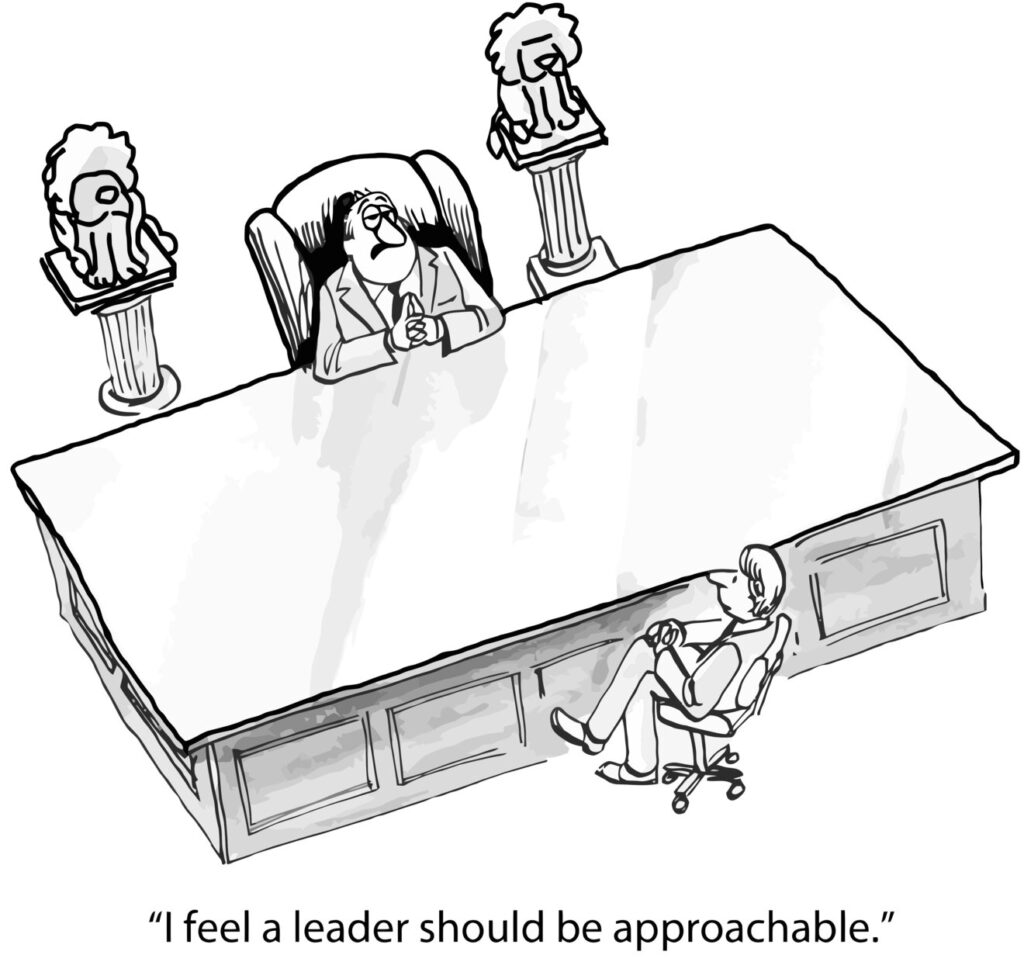

Inspiration help leaders figure out that they should be approachable to ensure their employee and followers’ growth, development, and progress. Also, they are always open to challenges, criticism, and viewpoints different from theirs. Inspirational leaders understand that restrictive workplaces or organizations (i.e., environments where people don’t speak up, offer insight, and ask questions) will stifle progress. Such places often never experience sustainable development and growth, as everyone keeps bottling up their negative notions, where they should be speaking out. Convinced leaders create an atmosphere that relaxes everyone while ensuring the free flow of ideas and thoughts. Their approachability fosters a learning environment culture.
#13. Accountability
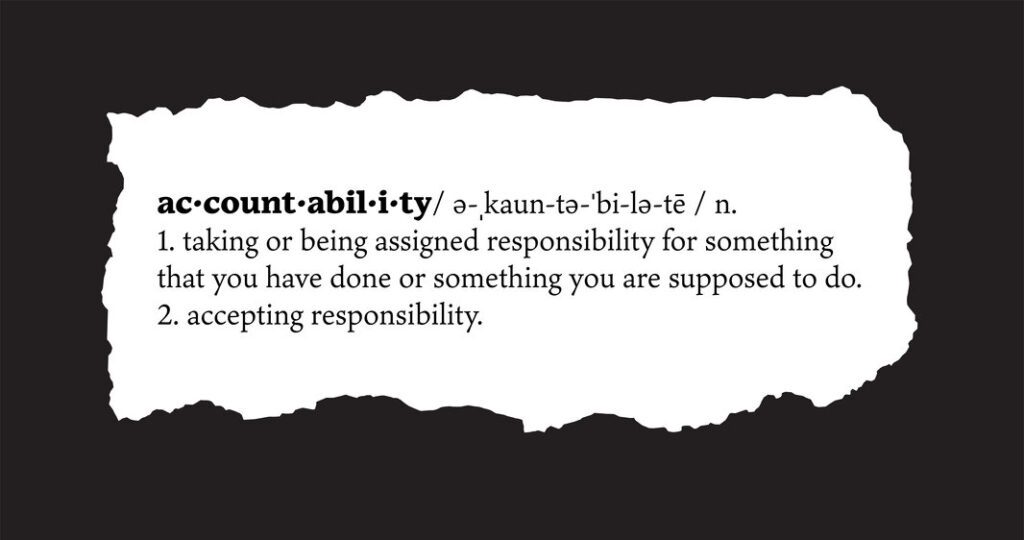

Michael Armstrong explains the connection between inspiration and accountability with a brilliant illustration. He said in Ancient Rome, there was a common tradition with engineers who constructed arches. Whenever they were done creating one, as they hoist the capstone, the engineer who worked on the arch essentially assumed responsibility for it. He does so by standing under the arch. The action shows he is accountable for the stability of the outcome of his structure. It inspires his workers and everyone else on the stable quality of his work.
Inspirational leaders are accountable for their actions. Such accountability shows their transparency and sincerity and drives up their credibility with their followers. Such leaders tend to always have the back of their followers. They don’t throw blame and shield themselves from accountability when the situation calls for it. Inspirational leaders know that they are not above the law. They take responsibility for their action, which draws respect from their followers. One line is standard with this kind of leadership; they are almost always never afraid to say the buck stops at their desk.
#14. Purpose


Leaders with a sense of purpose don’t lead by pointing and telling people the direction. They show their followers by heading to the place and making the case. These are the words of the late Ken Kesey, the American novelist, essayist, and countercultural figure. Inspired leaders understand the difference between a sense of purpose and vision. At the same time, the former involves understanding why you are heading for where you are going. The latter explains the clear idea of where you are going. It’s common knowledge that people are always happy to be a part of something bigger than themselves. Leaders with a sense of intent help materialize the dream—via purpose, they lead the way while others follow.
#15. Stick-to-it-iveness


Considering all the factors above, inspirational leader knows that they don’t just all work out at once. A Big Bang Theory does not happen and causes the manifestation of all these qualities in a whoosh! They understand that they get perfect gradually, adopting the ‘slow and steady wins the race’ mantra. They are adept believers in the stick-to-it-iveness philosophy. No matter the obstacles they face in the way, they persevere. They lean on the staying power of will as they cultivate and grow all the reasons we have mentioned here and beyond. Inspirational leaders have grit, are diligent, have stamina, with a firmness of purpose to achieve. Their cups are always overflowing with Sitzfleisch, and their followers benefit from this flow.


If you must become an inspirational leader, too, then it’s okay if you act on these qualities one after the other. Start by embracing and working on all the traits we have mentioned above. The attributes are—positivity, gratitude, vision, the art of listening, practical communication skills, becoming trustworthy, passion, courage, generosity, humility, authenticity, approachability, accountability, purpose, and a stick-to-it-iveness or persistent mentality. The more instinctive you get, the better you internalize the features.
“If you believe in yourself and have dedication and pride – and never quit, you’ll be a winner. The price of victory is high, but so are the rewards.” — Bear Bryant.
I’m sure you have learned a lot about what it looks like to be an inspirational leader. Are there some reasons you feel should have been on this list? Do you have testimonials or stories of inspirational leadership in action? Please, be sure to comment and let us know. While I’m sure you would improve yourself, note that if you work on stuff you like and are passionate about, you don’t need a master plan. Everything would find its way of falling place. Wishing you every success as you embark on your journey on becoming an inspirational leader!
Leadership
15 Reasons Why Optimism is a Core Leadership Trait
Optimism is a positive mental state that propels us to become. It is simply expecting the best possible outcome from any situation. You cannot be a leader and not hone the trait of optimism. In this encephalic long-form piece, we explore fifteen reasons why optimism is a core leadership trait. Please, buckle up for the journey and do read all about it.


Optimism is a mental attitude reflecting a solid belief or hope that the outcome of a particular endeavor will be positive and desirable. It is simply expecting the best possible outcome from any situation. An optimistic person attributes internal, stable, and global explanations to good things. A misanthropic person is not someone anyone wants to be around—someone who has darkness always hanging over them. If such a person is a leader, no one would want to follow them. Optimists make history. Optimists make the resounding difference. In the same light, followers will follow leaders who make history and a difference that shakes the very foundations of mediocrity.
“A pessimist sees the difficulty in every opportunity; an optimist sees the opportunity in every opportunity.” — Winston Churchill.
On the other hand, leadership is the simple method of motivating people mentally and physically to achieve a common goal. Influential leaders must possess certain qualities or traits and skills that can provide direction for their followers. These qualities or attributes include honesty and integrity, good communication, creativity and innovation, passion and commitment, optimism, and confidence. Various leadership styles exist, such as autocratic leadership, laissez-faire leadership, democratic leaders, situational leadership, transformational leadership, etc.


No matter what type of leadership style a leader deploys, if they lack an optimistic outlook, it defeats the whole purpose of what they are looking to achieve with their followers. How many soldiers would follow a cynical general into battle? If such a general does not inspire confidence in his troops, he is straight out of luck as he will fall in action as the enemy will claim a victory. How many of you in organizations want to follow an opposing leader? That negativity spreads like metastasizing cancer that wreaks havoc on the body politic of the organization. After all, said and done, optimism (i.e., a disposition or tendency to look on the more favorable side of events or conditions and to expect the most favorable outcome) always aims to paint a new and bright day!
A. Why Should a Leader Be Optimistic?


Leadership is quite an arduous task and, as such, is not for the faint-hearted. It is a lot of work to be a leader. As a leader, you manage a sleuth of things—emotions, beliefs, varying commitment levels, and buy-ins, performance, conflict, customer satisfaction, to mention but a few. If a leader does not have the true grit or capacity to perform, there is a problem. The dilemma becomes more complicated when a leader does not see the bright side of things. It is harder to lead from a bleak belief when trying to manage a broad spectrum of objectives.
“Pessimism is an investment in nothing; optimism is an investment in hope.” — Author Unknown.
There will be times where circumstances don’t go well as planned, and the leader faces the dilemma of motivating his followers to action or proffering solutions to the identified problem. In the face of troubling circumstances, leaders must stand twice as tall. In situations that make people panic, should the leader buckle under the weight and burden of the problem? Doing so will scatter those already looking up to him as a vector to give them some direction. This very purpose makes optimism a core leadership trait that everyone at the helms of the affair must cultivate.


Optimism is the super telescope that sees through the dark clouds of pessimism (i.e., the tendency to see, anticipate, or emphasize only bad or undesirable outcomes, results, conditions, problems, etc.). An optimistic leader sees the opportunity in every difficulty. That ability to see is the reason why a leader must become an optimist. The optimist must be able to keep their eyes on the prize. By so doing, they can guide others who don’t see the big picture.
“Pessimism is an investment in nothing; optimism is an investment in hope.” — Author Unknown.
Optimists are usually more successful than their pessimists’ counterparts because they see opportunities in every problem and instill courage in their followers rather than give up. Rather than seeing obstacles, they see opportunities. Instead of seeing the pains in a catastrophic situation, they see a pain point needing a solution. Optimists attempt to turn every problem to their advantage to create chances that everyone can benefit from at the end of the day.


Leaders must be optimistic in other to make full proof of the benefits of optimism. Leaders must embrace optimism as a trait that helps them carry the weight of responsibilities that come with the territory of being at the helm of affairs. Optimism is the oasis in the desert of negativity, non-progress, and pessimism. Hence, optimistic leaders are the metaphorical aquifers of institutions and organizations that keep all things green and productive. Accordingly, we can pellucidly say that optimism is a core leadership trait that all leaders need to their quiver full of features.
B. 15 Reasons Why Optimism is a Core Leadership Trait


The vital essence of leadership is to move forward. A leader should courageously lead his followers across obstacles and circumstances to a place of victorious progress. The fact we stipulate here ties into what Nicholas M. Butler, the American philosopher, diplomat, and educator, said that “Optimism is essential for achievement, and it is also the foundation of courage and true progress.” A successful leader must then stand on the core pedestal trait of optimism to forge forward with their followers.
“I believe any success in life is made by going into an area with a blind, furious optimism.” — Sylvester Stallone.
Optimism is a core leadership trait that leaders must imbibe because you cannot achieve anything of significance sans hope and confidence. The spirit of hope and faith is at the very nucleus of optimism. Building monuments for optimism is a norm. You don’t see institutions or organizations erecting monuments to the pessimist. Optimism is like the sun. It is a radiant source of light and power that dispels that dark shrouds of negativity. The leader that is an optimist is the harbinger of a can-do spirit and mentality. So, why is optimism a core leadership trait? Let us look at several reasons why it is so. Let’s go:
#1. Optimists are Innovative


Innovation is one of the greatest keys to the growth of any company. It is what distinguishes between a leader and a follower. Optimists don’t get too comfortable with the status quo. Their can-do disposition is what sets them apart. When others hesitate, they advance on the new ideas that create new opportunities and profits. They constantly come up with new concepts, new business plans, and strategies, bringing about innovation. Because of this, they are always open to thinking outside the box.
“Optimism is essential to achievement, and it is also the foundation of courage and true progress.” — Nicholas M. Butler.
Leaders who embrace optimism as a core leadership trait are always open to a new mindset, leading to new results. Because mindset is everything, a confident and positive one propels creativity, which is intelligence having fun. A new mindset is at the core of innovation. A new mindset thinks outside the box, which ushers one to discoveries. Old ways won’t open new doors, and optimism paves the part to creativity for those leaders that possess it.
#2. Optimists are Future Orientated Thinkers


According to psychologists, optimists are less susceptible to the psychological phenomenon known as the “Recency Effect.” The terminology means that the most recent experiences we go through are the ones that we are most likely to remember. We assume that these experiences will continue in the future. Carmine Gallo, a Senior Contributor at Forbes, establishes in “5 Reasons Why Optimists Make Better Leaders” that “Optimists see the big picture.” They are often immune to the recency effect, and they do so by seeing a more panoramic view of a situation rather than being narrow-minded in their perception. Pessimistic leaders can’t see a clear path ahead. They only see doom and gloom. Hence, optimism as a core leadership trait will battle the recency effect.
“The pessimist sees difficulty in every opportunity. The optimist sees the opportunity in every difficulty.” — Winston Churchill.
For example, if a person keeps applying for a job and keeps getting turned down, there is a tendency that such as person will discontinue seeking jobs or going for interviews. They might be on the lookout for other means of employment (e.g., self-employment) rather than wallow in self-pity. An optimist is a big picture thinker and has a positive view of the future. They would not be looking at what is happening right now or what happened in the past. Leaders that are optimists look at the possibility of the great things that could happen in the future. They glue their eyes to what is ahead of them. The lookback momentarily via the rearview window to the past. They learn from the past, educate themselves in the present, and aspire to a greater tomorrow in the future.
#3. Optimists Go for Gold


Another reason why optimism is a core leadership trait is that optimists go for gold. They get to work on their strengths or talents instead of concentrating on their weaknesses. Optimists focus on what they do. They also focus on what they can learn to do well—call it their opportunity if you like. They focus on what they excel at, which gives them a competitive advantage over others. Optimists don’t concentrate on anything they aren’t. Instead, they highlight the areas of their strength. Leverage their opportunities. Improve on their weak spots, and watch out to eschew anything that is a threat.
“I am a stubborn optimist: I was born an optimist and will remain an optimist.” — Kofi Annan.
Optimists go for gold—they seek the best to win the prize. Based on the facts in the preceding paragraph, a great book that all my readers need to get and add to their book collection is Unearthing Your Latent Potentials: Discovering the Gems of your Subliminal-Self. Call it an optimists manual. I wrote this book to help all my readers to discover their strengths, leverage their opportunities, work on their weaknesses, and eliminate all threats. The Prairies Book Review wrote a great piece on it, recommending it to everyone in their statement, “Urgent and actionable, this passionate manifesto about the unlimited possibilities dormant inside all of us will be a welcome addition to any reader’s bookshelf.” Do yourself a favor, grab a copy and go for gold as an optimist.
#4. Optimists Avoid Negativity


Optimism is a core leadership trait because it allows you to sieve out negativity—that is, negative-minded fellows or pessimists out of your life. Optimists try all they can to avoid negatively adverse environments, people, and circumstances. Once an optimist knows a person to be a faultfinder or a chronic skeptic, who put in effort doing their very best to corrupt your mindset and thinking, optimists do their best to keep their distance. Doing this helps to keep only the most hardworking and positive-minded individual as part of the team and the negative Nancy at bay.
“People deal too much with the negative, with what is wrong. Why not try and see positive things, to just touch those things and make them bloom?” — Thich Nhat Hanh.
Optimists are responsible for keeping themselves, and their followers shielded from harmful or toxic pessimism. In the words of Michael Jordan, we should “Always turn a negative situation into a positive one.” Optimism as a core leadership trait cancels out the negative while bolstering the positive. A negative mindset is like deadly metastasizing cancer that you must eliminate, all things being equal. Inculcating optimism as a leadership trait helps leaders build a shield that protects them from negative influences, and they flourish in turn.
#5. Optimists Have a Winner’s Philosophy


Optimistic people always focus on the positive aspects of a situation. Their view of life is different from that of a pessimist—they have a winner’s philosophy. An Unknown Author once said that “As you travel through life, whatever be your goal, keep your eye upon the doughnut, and not the hole.” What does this mean? Optimists focus on the substance of the matter—the focus is on what adds paramount value. They don’t focus on the void and things of negative value. A success mindset is the terra firma of value.
“Strive not to be a success, but rather to be of value.” — Albert Einstein.
Hence, optimism as a leadership trait allows optimists to focus on what matters. Leaders as optimists have hope and believe in a better future. They focus on opportunities instead of obstacles. They understand what motivates and inspires them to live a successful and fulfilled life. Success to them happens first in the mind before it translates to physical reality. Negativity and fear do not belong in their world, and they see them as inhibitors to their success in life. They transform the obstacles of negativity become stepping stones to greater heights.
#6. Optimists are Problem Solvers


Optimists try to identify what they can change and take action, controlling what they can handle in the face of challenges, failures, and adversity. Pessimists cower at problems, while leaders that lean towards optimism take the horns of the raging bulls of difficulties that they face. Rather than seek an excuse to deflect a problem, optimistic leaders move towards the situation, looking for solutions in the process. Hence, they have a strong bias for action.
“Pessimists are toxic. I love optimists—and by that, I don’t mean people who are unable to see challenges. Optimists are solution-oriented.” Ivanka Trump.
Optimistic leaders also try to look for ways to control situations that are almost beyond their control. Why? Because they believe that no problem is uncontrollable. They are constant solution seekers. Optimism is a core leadership trait because it allows leaders to troubleshoot circumstances that they encounter. They are solution harbingers that You can accomplish great things if you decide to control the things you do have power over.


An optimist seeks to improve situations. They never want to leave a position as they found it, especially if it is contrary to the norms of efficiency and logical productivity. Instead of only analyzing the issues surrounding a problem, they always find solutions. Optimist leaders use a solution-based approach to inspire creativity and innovation.
#7. Optimists Lead from Within


Achievement requires optimism and actual progress, and you build exceptional leadership on the foundation of optimism. Optimistic leaders must “lead from within.” The phrase “leading from within” means leading with a cool, calm, and collected disposition. Optimism as a leadership trait allows leaders to lead from a position of tranquility—when everything is in a state of Brownian Motion or chaos; they remain level-headed while exercising a strong bias for action because they believe in the possibility of a positive resolution.
“I don’t go by the rule book… I lead from the heart, not the head.” — Princess Diana.
Leading from within as a factor of optimism as a leadership trait allows the leader to act rationally and not from a reactive standpoint. When tempers are flaring, and others are anxious, such a leader with this attribute is the calm that placates these emotions. Such a leader is the voice of reason that inputs logic and understanding in the chaotic situation to tranquility. Leading from within allows optimistic leaders to make decisions from facts, not from erratic feelings. Facts have no feelings.


Optimistic leaders who lead from within nudge them to make decisions standing on a neutral, unbiased pedestal. Confident and positively inclined leaders don’t take sides. They listen to all the relevant parties to gain knowledge and understanding about the matter from a neutral position and decide based on facts about the issue. They make their subjective suggestions after comparing parties’ positions to the absolute objective truth about the matter.
When optimistic leaders champion causes from within, they do so from understanding and not from a position of ignorance. They understand the status quo of controlling narratives. Doing so allows them to forge forward with their new and current narratives to move the pack forward. Optimistic leaders who lead from within have a great depth of self-knowledge—they know who they are, what they believe in, their knowledge, or general-purpose.
#8. Optimists Are Apt Communicators


Optimism as a core leadership trait is heavily dependent on the art of effective communication. You can have the best ideas globally; however, having those ideas is futile if you can’t communicate well. Optimistic leaders are intentional and positive in their communication. The keyword and adjective here that qualifies communication is positive, emphasizing what is laudable, hopeful, and of good intention. Pessimistic leaders can be deliberate; however, they often lean towards negative communication that dampens motivation and throws the wrench of skepticism into the wheel of their dialogue.
“As a leader, you must consistently drive effective communication. Meetings must be deliberate and intentional—your organizational rhythm should value purpose over habit and effectiveness over efficiency.” — Chris Fussell.
Optimistic leaders build camaraderie and community via effective communication. In the words of Brian Tracy, the Canadian-American motivational public speaker and self-development author, “Communication is a skill that you can learn. It’s like riding a bicycle or typing. If you’re willing to work at it, you can rapidly improve the quality of every part of your life.” Hence, optimistic leaders must embrace the art of effective communication in other to communicate their positive thoughts intentionally with meaning. The PsychCentral title, “Five Easy Steps to Better Communication,” is a great place to begin learning the art of effective communication.


Optimistic leaders can transfer their energy and motivation to people via effective communication. It also helps them create and keep long-term relationships. They use this tool to unearth the wrong notions that spawn from pessimism. Optimists are comfortable communicating and sharing their desires for a better future or better solutions. They choose to speak ab imo pectore while using data and facts to fortify the foundations of their said meaning.
#9. Optimists are Business Starters


An optimist sees opportunity where others see a closed door, pain point, or difficulty. Others see these variations as obstacles or impossible insurmountable boulders. In contrast, optimistic leaders see these as possibilities for something big. You can’t tell me that the likes of Jeff Bezos, Bernard Arnault, Elon Musk, Bill Gates, Mark Zuckerberg, Richard Branson, etc., are not optimists? These fellows and more not mentioned visualize the possibility of things becoming where others dare even to walk or dream. Their business empires are dominating the world today and creating business economies for the society at large.
“Starting a business is not for everyone. Starting a business—I’d say number one is — have a high pain threshold.” — Elon Musk.
Optimism as a core leadership trait is a hallmark attribute that helps mold the mind of business starters or entrepreneurs. For instance, when the economy is down, and unemployment data is rising, the pessimist uses those factors as excuses to stay still. The optimist refuses to let these macro-economic trends limit their imaginations. For instance, the CBS News report by Aimee Picchi establishes that “Billionaires got 54% richer during the pandemic.” It is their wits and optimism at work.


Nothing will dissuade them from creatively sustaining their businesses in tough times. Optimistic leaders are the maestros at leveraging pain points. Nothing prevents them from starting businesses that ultimately put people to work. Where others see obstacles, they see stepping stones. Where others see the speckled night skies, they see an opportunity for exploring a new frontier. That is the power of optimism as a core leadership trait—leaders who possess this trait move on to become great business influencers and entrepreneurs. Where others are afraid to take a step, optimists take a leap of faith in starting new business ventures.
#10. Optimist Behaviors are Infectious


Being rationally optimistic can be contagious. Outstanding positive leaders carry their followers along by displaying positive behaviors that become a significant catalyst of influence. As mentioned above, via good communication, promising leaders can communicate their intentions and mannerisms effectively that their impact and draw becomes organic. People naturally flow towards them. That is the draw that we see with great motivational speakers and personalities.
“A healthy attitude is contagious but don’t wait to catch it from others. Be a carrier.” — Tom Stoppard.
Optimists know that their behaviors and outlook will impact everyone around them, especially their followers. So, they try always to maintain a positive outlook. In the face of unfavorable circumstances, they remain optimistic. This positive outlook will, in turn, have a positive effect on the people around him. Promising leaders invest a lot in developing a healthy attitude, which can be pretty contagious. Sound energy is infectious.
#11. Optimists are Not Risk-Averse


Optimistic leaders are not risk-averse (i.e., the reluctance to take risks or tending to avoid risks as much as possible). An optimist is a risk-taker and is comfortable making tough decisions when it comes to it. We have seen the connection between optimism and entrepreneurship—optimistic leaders take risks to start business ventures and become entrepreneurs. Pessimists are risk-averse. Because of their skeptical viewpoint on issues, they often lean towards avoiding risks as much as possible. Great ventures are a function of risks. How will you know if you can or cannot do something if you don’t even try? From what Mark Zuckerberg said below, we can technically say that ‘failing to take risks is planning to fail.’
“The biggest risk is not taking any risk… In a world that is changing really quickly, the only strategy that is guaranteed to fail is not taking risks.” — Mark Zuckerberg.
Optimistic leaders accept the reality of failure and the possibility of making mistakes. Although promising leaders focus on productivity, excellence, and efficiency, errors are bound to happen. We are not at all perfect; we stumble at times. However, it should be a learning process in the journey of becoming our best selves ever. Optimistic leaders view failure or mistakes as an educational opportunity and a path towards progress. They see failure and setbacks as a part of life, as a part of the necessary process of becoming. So, optimistic leaders encourage their teams to learn from the situation quickly and move forward. The goal is not to make the mistakes a repetitive process. When the mistakes become redundant, then these leaders dig deeper to ascertain the root causation of the problem and the reasons for the failures to learn.


Hence, optimistic leaders don’t come barreling down always at their followers at the first instance of a mistake. That will send a shockwave of fear down the rank and file, making the organization risk-averse. Optimism as a core leadership trait is the root for creating a learning organization (LO) (i.e., an organization that continuously learns through its members individually and collectively to make a sustainable competitive advantage by effectively managing internally and externally generated change).6 Optimistic leadership plays a role in fostering the warm ambiance that bolsters the characteristics of a LO. Such LO characteristics are cultural values, leadership commitment and empowerment, communication, knowledge transfer, employee characteristics, and performance upgrading.6
We make the following reflexive deductions from the study of Yuraporn Sudharatna and Laubie Li that: Optimistic leaders foster a culture that continuously learns. A culture that supports its partners to try new things, whether success or failure, is the outcome. Hence, partners here are not risk-averse, encouraging an ambiance of sharing without retribution, promoting an enhanced sense of psychological safety. Optimistic leadership achieves non-risk-aversion via commitment and empowerment via the funnels of vacillating communication channels that give and receive. All this promotes the osmosis and diffusion of knowledge among employees and leadership alike. Optimistic leadership tracks all this to foster performance and efficiency.
#12. Optimists are Adaptable


Optimism is a core leadership trait because it makes leaders more adaptable (i.e., adjusting oneself readily to different conditions). Optimistic leaders are quick to respond and adapt to the situation at hand. Courageous leadership fosters an atmosphere of innovation and creativity in organizations, where people are not afraid to challenge the status quo and out-of-the-box thinking. The adaptability process creates the wiggle room for mistakes, as stipulated in the points and paragraphs above. It creates a culture of experimentation and risk-taking.
“To create an organization that’s adaptable and innovative, people need the freedom to challenge precedent, to ‘waste’ time, to go outside of channels, to experiment, to take risks, and to follow their passions.” — Gary Hamel.
Adaptability makes optimistic leaders very flexible. In the words of Mandy Ingber, a yoga instructor and a former actress, “No matter what twists and turns your life offers you, your ability to be adaptable and flexible will help you to stay open to all of the hidden gifts that difficulty may offer.” Hence, no matter the twists and turns or curve balls that life throws at the optimistic leader, they never take their eyes off the ball. They adapt themselves and adjust, shifting to counter the effect of the outside force. In Chapter Seven of my book, Unearthing Your Latent Potential: Discovering the Gems of Your Subliminal-Self, I allude to Le Chatelier’s principle of equilibrium. When optimistic leaders shift to adapt to outside forces that disturb their sense of balance, it is akin to what happens in this chemical principle.1
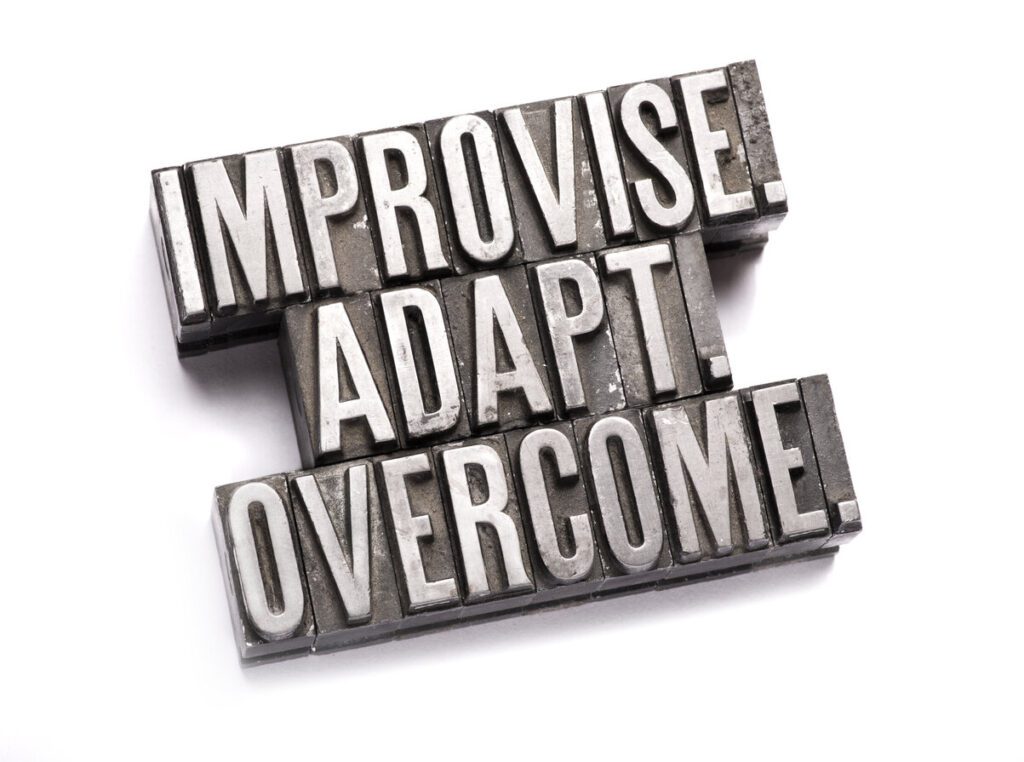

We cannot overstate the power of adaptability as a factor of optimistic leadership. Adaptability ensures versatility, longevity, and resilience. Promising leaders latch on this quality to go the long haul in accomplish greatness. Hence, should something go amiss, they will want to get their teams moving forward and back on track as quickly as possible. If teams make mistakes, these leaders will want to know what went wrong. They want to know what they can do differently to avoid making the same mistakes in the future.
#13. Optimists Embrace Continuous Improvement
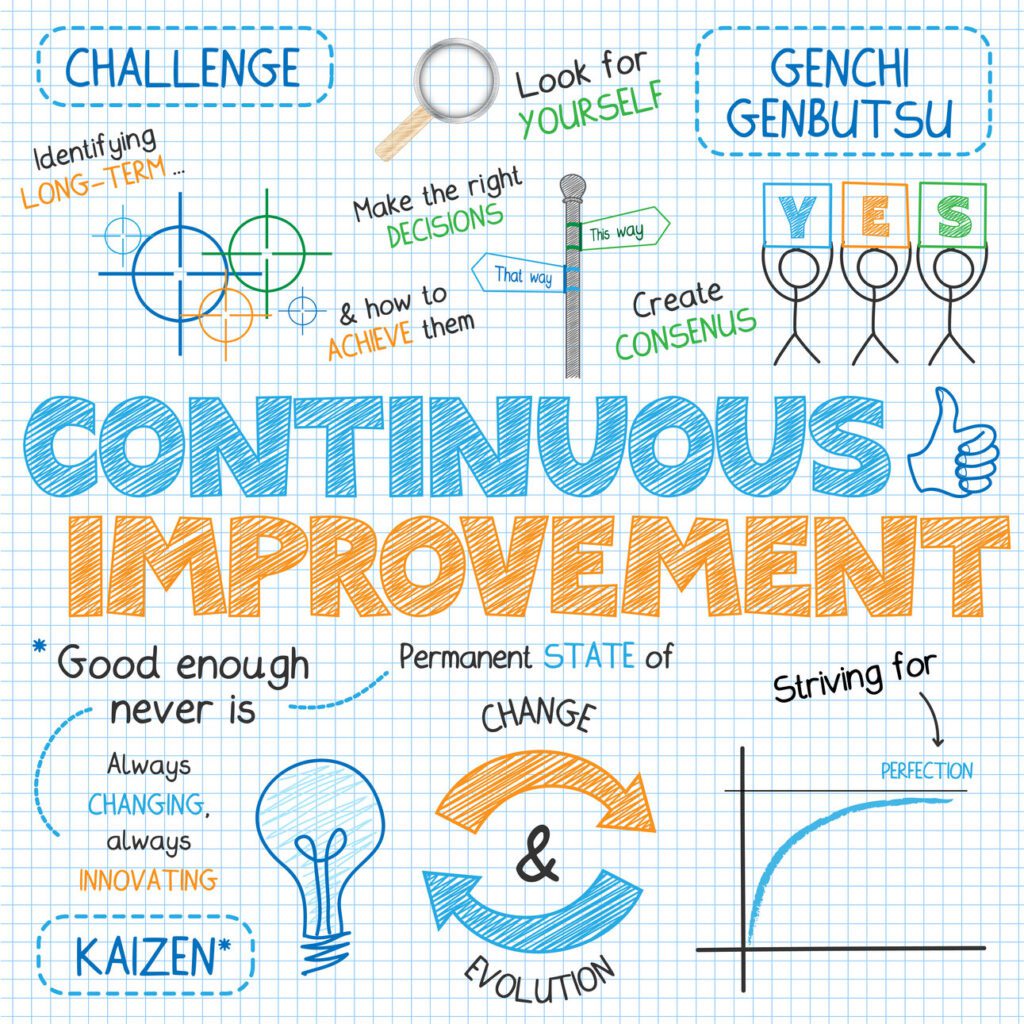

Optimism is a core leadership trait because leaders embrace continuous improvement (i.e., incremental and breakthrough improvements to products, services, or processes). Optimistic leaders never want to stay stagnant. Continuously, they want to be developing themselves and their team. There is absolutely no room for stagnancy. There is an onward ever, forward ever mentality at play. Their ability t look ahead propels them towards giving their very best and motivating their team to achieve the same thing. The goal is to be better than they were yesterday.
“Strive for continuous improvement instead of perfection.” — Kim Collins.
Optimistic leaders leverage continuous effort as the fulcrum that allows them to make a difference. They lean on this as a way to unlock potentials in themselves and their teams. The goal, as the quote by Kim Collins, the former track and field sprinter from Saint Kitts and Nevis, establishes that the goal is not perfection. The goal is, therefore, not ceasing in becoming better daily. For optimistic leaders, you find the secret of their success in their daily routine. Hence, by sticking with it, promising leaders grow their strengths and that of their teams.


An excellent go-to model for optimistic leaders is the plan-do-check-act (PDCA) cycle. Once again, my book, Unearthing Your Latent Potential: Discovering the Gems of Your Subliminal-Self1, is a personal development PDCA cycle primer that takes you on a journey of discovery. What do you do with your strengths, weaknesses, opportunities, and threats after you discover them? You develop a plan (Plan-phase), act on them (Do-phase), monitor your progress (Check-phase), and keep acting on them if all is well, or go back to the drawing board if something is amiss (Act-phase). Optimistic leaders improve via the PDCA cycle.
#14. Optimists Reason with Uncertainty


Optimism is a core leadership trait because leaders reason with uncertainty (i.e., not definitely ascertainable or fixed, as in time of occurrence, number, dimensions, or quality). Life is full of uncertainties. There are many things that we are not sure of in life. However, we live through these indeterminacies comfortably, albeit with some apprehension. Valid reasoning becomes very problematic when the information at hand is uncertain. Our ability to reason under these conditions as humans are also known as probabilistic reasoning.2
“Exploring the unknown requires tolerating uncertainty.” — Brian Greene.
We can’t avoid uncertainty in our daily life. You don’t know if you will live the next minute. We are often unsure of what to eat, what to drink, and even what to wear. We are uncertain of the stock market. Making decisions usually involves uncertainty for leaders. However, to deal with these uncertainties intelligently, we must resent them well and reason about them.3 The ability to reason often allows us to determine what is happening in the world, how we should react to it, and how the world should behave. Uncertainties complicate reasoning and muddy the waters. We often adopt traditional reasonings (e.g., formal, procedural, or analogical) to make sense of things. However, uncertainties (e.g., noise, uncertain change, ignorance, etc.) can sometimes make formal reasoning difficult.4


Optimistic leaders are willing to go the extra mile through the sundry methods of reasoning with uncertainty. These methods could be symbolic, statistical, or fuzzy logic. Delving into each of these methods would be going beyond the scope of this piece. The summary is that optimistic leaders wish to shun every ounce of skepticism and go the extra mile to deploy unconventional methods to find solutions for themselves and their teams. In the words of Tim Crouch, an experimental theatre-maker—an actor, writer, and director, “Uncertainty is a very good thing: it’s the beginning of an investigation, and the investigation should never end.” The never-ending investigation is the hallmark of continuously improving the status quo, albeit the mechanisms for solution are unconventional via reasoning with uncertainty.
#15. Optimists Believe in the Power of Teamwork


Optimism is a core leadership trait because these leaders believe in the power of teamwork. Optimistic leaders don’t go it alone—they believe in forging ahead with teams. There is power and strength in collaboration. One person can only accomplish but so much; however, when you bring others into the equation, you multiply the chances of achieving more. In the words of Mattie Stepanek, an American poet who died at the age of thirteen, “Unity is strength… when there is teamwork and collaboration, wonderful things can be achieved.” Teamwork fosters strength in the light of vision and purpose. It builds trust, which further builds speed.
“Teamwork makes the dream work, but a vision becomes a nightmare when the leader has a big dream and a bad team.” John C. Maxwell.
Optimistic leaders believe in the power of teamwork and do everything in their ability to build a functional and cohesive team. It does not take one musician to make an orchestra—you need a group of musicians to form a symphonic orchestra. The critical adjective of note here is symphonic. For a team of instrument-playing musicians to produce a melodic tune of note, they must be in sync, knowing their part and timing of when to play their role during the symphony. It does not take a bead of water to form an ocean—you need an infinite number of drops to create seas. It takes teams to build great brands, and optimistic leaders understand and live out this factor.


When a house operates in unison, it stands; however, a house divided stands no chance of staying together. An enemy might defeat one person, but two people can stand back-to-back to defend each other. And three people are even more potent. They are like a rope that has three parts wrapped together—it is tough to break. Pessimists, valid to their nature, are already skeptical about anything of note working. Hence, the purity of collaboration for the greater good of a cause is already tainted. Optimistic leaders embrace the benefits of cooperating. They understand that teamwork promotes the sacrifice of selflessness. It supports corporate accountability to the cause of success.
Optimism is a core leadership trait because leaders understand the value of leveraging the team members’ strengths. Every team member contributes something unique that makes the brand or organization a well-lubricated and cohesive unit. For instance, Oaekpost is my dream. However, from the drawing board, as I crafted this platform into reality, I knew that I could not do it all alone. The Oaekpost vision is beyond me, and my sole capacity to deliver cannot make what I envisage for this company a reality. I am now building a team of folks who believe in adding value to minds. Everyone on my team has their specialty. Our success depends on it. If you must gain a competitive advantage in your niche, you must cultivate optimistic leadership with teamwork as your pivot point.
C. Optimism Must Be Rational


In this piece, we have seen “15 Reasons Why Optimism is a Core Leadership Trait.” Despite all these positive reasons that this piece profers, optimism must be rational (i.e., it must be agreeable to reason, reasonable, or sensible). We must strike a balance on how we lead, with our hearts or with our heads. As a leader, you must have a metaphorical sieve of commonsense in your mind that helps you assess when things are going awry. It is a fact that optimism can pose challenges. Hence, we must exercise some sense of caution. On the web platform, Verywellmind, Elizabeth Scott, in her article titled, “What is Optimism?” highlights some potential pitfalls of optimism. Let’s look at them and then some more. Let’s go:
#1. Optimism Bias


As much as optimism is a good thing, there are times that we do not weigh the result of our optimistic choices carefully and rationally. Optimism bias is “the overestimation of the likelihood that one can experience good things while avoiding bad things. There is an underestimation of the risks of experiencing negative outcomes.”5 Although it is excellent to be risk-averse, optimistic leaders must also weigh the costs. While they should always focus on the positives rather than the negatives, they should never underestimate the risk of encountering a negative outcome. Don’t let yourself descend into the quagmire of despondency via a blind and stubborn optimistic outlook that is not working. If the strategy is not working, be humble enough to go back to the drawing board and re-strategize. Optimism must be rational.
#2. Poor Risk Assessment


Elizabeth Scott establishes that “When people are overly optimistic about something, they may be less likely to think about all of the potential risks and take steps to mitigate those issues.”5 For instance, a very recent example is the actions of the Trump Administration at the onset of the COVID-19 Pandemic. The 45th President, President Donald J. Trump, was overly optimistic that the COVID-19 Pandemic would quickly pass. You can give him an A+ for sticking with his message. However, the facts in this scenario were saying otherwise. His administration started making efforts after the Pandemic ran away and became more challenging to manage, wreaking havoc with many deaths in its wake, a clear example of inadequate risk assessment. Optimism must be rational.
#3. The Optimist Pride


Here is an optimistic leader or person championing a cause and sticking to a message. As it stands, things are not going according to the presumed plan. The optimist pride prevents the leader from rolling back and re-evaluating the process and message. Their concern is much more, “What will people say? They will say I am a failure. They will mock the process and my message.” So, they stick to a failing message that eventually leads them to their doom. Pride goes before a fall. So, the optimistic leader needs to shelve their pride and go back to the drawing board and re-plan at this juncture. When it no longer makes sense, make a change. Optimism must be rational.
#4. Toxic Positivity


Can optimism become toxic? Elizabeth Scott establishes that “Sometimes people tend to overvalue positive feelings while ignoring or even repressing negative ones.”5 Being an optimist is fantastic. However, we should never invalidate the psycho-emotional feelings of people who are going through the eyes of the needle. Optimistic leaders need to have empathy to understand what others may not be encouraging emotionally. Your goal as a promising leader is to infuse a sense of hope and validation. Optimism must be rational.
“Toxic Positivity (noun): The overgeneralization of a happy, optimistic state that results in the denial, minimization, and invalidation of the authentic human emotional experience.” — The Psychology Group.
In the leadership sphere, optimism is profitable for coping, managing stress levels, reinvigorating physical stamina, and developing resilience to pursue goals and objectives. Optimistic leaders focus on the ‘good’ in life and are grateful for it. However, optimism becomes toxic when we ignore the ‘bad’ in life and suppressing the emotions that ensue. It is like missing a crack in a dam and not fixing it. With time, the gap will continue to grow until it causes the barrier to come crashing down if not caught and resolved timely.


There are times that we experience negative emotions, even in the leadership circle. For instance, optimistic leaders should be careful of suppressing the feelings of their followers. If there is resentment in the rank and file of their organization, then it is best the face is head-on and address it. Using positive speak to suppress emotions will only do more harm than good. A time will come when the emotions under suppression will explode and lead to more catastrophic ends in the organization. It is here that empathy has its way of helping to address these negative emotions. Optimism must be rational.
“Despite all these positive reasons that this piece profers, optimism must be rational (i.e., it must be agreeable to reason, reasonable, or sensible).” — Ogbonnaya Agom-Eze.
Other sources also highlight some of the considerations of optimism. In the title, “3 Times Optimism Does You More Harm than Good,” Amy Morin of the Business Insider posits some concerns of too much optimism. They are as follows: exaggerating the positives, being overconfident in one’s abilities, and overestimating your chances of success, are some matters that characterize too much optimism. We can go on delving into the various cons of optimism. However, it is evident that the positives of optimism far outweigh the considerations.
D. What is the Conclusion of the Matter?


Optimism is a core leadership trait that I urge every leader to invest the time to cultivate. Optimism is a call for us, for leaders to do better, and consider this piece to be that clarion call. Optimism seeds our minds with the seedlings of a can-do attitude, spirit, and mentality. In the words of Dylan Taylor, an American executive, and super angel investor, “There are really four ‘headlines’ for me: honesty, integrity, hard work, and what I call a ‘can-do’ attitude. You could call that ‘can-do’ attitude optimism, but it is not Pollyannaish optimism. Rather, it is a ‘we’ll figure it out’ type of mentality.”
“We should celebrate when optimism and hard work triumph over cynicism, lethargy, and fatalism.” — Sadiq Khan.
Similarly, this piece does not advocate Pollyannaish (i.e., unreasonably or illogically optimistic) optimism. We establish the need for leaders to embrace and cultivate the trait of optimism. However, we also advise that optimism must be rational—it must never be unreasonable or illogical. Leaders must approach optimism with an ounce of commonsense. We are wide awake here, talking about something sensible and practical that leaders can adopt to change organizations. Optimism is an investment in hope; pessimism is an investment in nothing. So, consider the time you have invested in reading this long-form piece as an investment in hope and value.


So far, this piece establishes fifteen reasons why optimism is a core leadership trait. First, optimists are innovative. They don’t get too comfortable with the status quo. Hence, they unleash their innovative and creative genius by thinking outside the box. Second, optimism is a core leadership trait because optimistic leaders are future-oriented thinkers. The recency effect does not truncate their vision—they see the big picture. They are the watchmen standing on the towers of their organizations and see the distance. They can see danger approaching from afar and can prepare their organizations for the onslaught of variations in other to secure a win. Third, optimistic leaders go for gold—they seek the best to win the prize. Fourth, they eschew the negative. Optimism is a shield that protects leaders who possess it from the rain of the arrows of pessimism and negativity. Fifth, they adopt a Winner’s Philosophy—they work towards winning consistently.
Sixth, optimism is a core leadership trait because it makes leaders into problem solvers. They don’t shy away from problems—they are solution seekers. They are leaders that continuously seek to improve situations. Seventh, they always strive to lead from within (i.e., leading with a cool, calm, and collected disposition). They are not erratic and do their very best to be rational always. Eighth, optimistic leaders are apt communicators. What good is it to have great ideas on how to improve your organization, and you lack the craft of efficient, communicative delivery? If you can’t communicate effectively as a leader, then you are just fooling yourself. Optimism will nudge you towards honing the art of your communicative skills. Ninth, optimistic leaders are business starters. They visualize the possibilities of things becoming, and they make it happen. Tenth, promising leaders have contagious behaviors. They will influence their followers to become their best selves ever in the spirit of productivity and profit.


Eleventh, optimistic leadership is not risk-averse—those that are reluctant to take risks never achieve much in life. How will you know if you can or cannot do something if you don’t even try? Twelveth, optimistic leaders are adaptable—they are apt at adjusting themselves to different conditions. Organizations are constantly changing. Hence, you need confident leaders to be the captains of your organizational flotilla. They will help you navigate and sail the forever-changing seas of circumstances. Why? They are adaptable; they can handle the pressure without breaking. Thirteenth, they embrace continuous improvement—they never want to stay stagnant. They always have a forward-looking outlook towards personal, leadership, and followership development. Fourteenth, optimistic leaders reason with uncertainty. They are constantly honing their craft of probabilistic reasoning as they face life and business uncertainties. Finally, the fifteenth, spirited leadership believes in the power of teamwork. You can’t go it alone—teamwork makes the dream work.
Optimism has a lot of solid points back it as this piece establishes. However, there are some considerations that we should note as we study optimism. The first is optimistic bias. Good things happen for sure. However, you must never underestimate the risks of experiencing adverse circumstances. Second, optimism that is not careful could make you neglect proper risk assessment. Third, beware of optimist pride. Stop concerning yourself with what people say. Doing so could nudge you to a place of pride and inaction. Remember, pride goes before a fall. Fourth, beware of toxic positivity. Don’t suppress negative emotions when they arise—deal with it head-on so that it does not fester.


As I finalize this piece, I read William Ernest Henley’s (1849-1903) poem Invictus and the last verse of this poetic piece speaks to my inner optimism. It says,
It matters not how strait the gate, How charged with punishments the scroll, I am the master of my fate: I am the captain of my soul.
Optimistic leaders are the captains of the souls of organizations. They must:
- Mind their decks before any egoism. The matters of the many come first before the issues of self. They address all before they address themselves.
- Look to the considerations of their followership and organizations before their selves. They serve their ship altruistically.
- Embrace knowledge and rationality before making utterances to affect the status quo positively.
- Hold the power staff of veracity and will never allow the Balrog of Cant to pass. And you shall know the truth, and the truth shall set them free.
- Believe in the phrase ‘learning is earning.’ They learn, earn before they leap to action. Knowledge is paramount to the optimist’s success.
- Adapt to change over stasis. From the decks of the organizational galleons, they look beyond the raging Davey Jones Locker of the status quo.
- Believe the phrase, “more act less lag, more act less yap.” They don’t sit around lagging and yapping—they talk the talk but also walk the walk.
All these lie within the soul of the optimistic leader. Optimistic leaders are the captains of the souls of organizations, and these mantras should guide their sail.
“You really need to love something or someone in order to work hard enough to be very successful. You have to believe in something and have a certain optimism. Faith and optimism come from love.” — Maya Soetoro-Ng.
I can say with full enthusiasm that ‘I am a full-blooded optimist.’ My creed is that ‘I have hope and confidence in success and positive future. I expect good things to happen to me in all areas of my life. I am intentional about life and believe that all things are working together for my good. My future is bright—though I walk through the dark labyrinths of life, I always see the glimmer of light at the end of the tunnel. Negative happenstances will not crush me; they are only molding me to become my best self ever. Challenges are not obstacles; they are only stepping stones for my ascendance to greater heights. I am mindful. I am grateful. I am alive. I am a leader. I am an optimist.’ Make this your creed too.
References
- Agom-Eze, O. (2020). Unearthing your latent potential: Discovering the gems of your subliminal self. Ounioae Books.
- Aitken, C., & Mavridis, D. (2019). Reasoning under uncertainty. Evidence-Based Mental Health, 22, 44-48. Retrieved from Evidence-Based Mental Health.
- Halpern, J. Y. (2017). Reasoning about uncertainty. The MIT Press. Retrieved from Google Scholar.
- Huber, M. (2015). Reasoning with uncertainty. Retrieved from ranger.uta.edu.
- Scott, E. (2020). What is optimism? Retrieved from Verywellmind.
- Sudharatna, Y., & Li, L. (2004). Learning organization characteristics contributed to its readiness-to-change: A study of the Thai mobile phone service industry. Managing Global Transitions, 2(1), 163-178.
Leadership
10 Reasons Why Decisiveness is a Core Leadership Trait
Decisiveness is a core leadership trait that will change your life trajectory. It will enhance, empower, distinguish, and put you on a trajectory of growth. Read all about it!


One of the biggest problems facing leaders in the world today is the issue of decision-making. People tend to over-analyze things before they make up their minds on what to do or not do. One of the things that have been attributed as the cause of this is the vast opportunities or myriads of information out there. We are in an epoch of information overload, which can make decision-making a little more difficult. People are faced with a deluge of information to the point it becomes difficult making up their minds. A term has even been created for this state of things, called “paralysis.” Leaders must be decisive in the world today. This isn’t important only to the corporate world but to other aspects of society as well. Leaders across different areas of life need to keep perfecting the art of decisiveness.
“Decisiveness is the one word that makes a good manager.” — Lee Iacocca.
Whether it’s a father as the head of the house or a mother who exercises care and control over her children. Or a religious leader who presides over their flock. Or a teacher who teaches a classroom of students—decisiveness is a fundamental leadership trait that shouldn’t be underestimated. Sometimes, in a bid to avoid making mistakes, people fail to decide on time or fail to settle on a given issue. This article seeks to throw enough beam of light on the all-time importance of being decisive. It’s so important for leaders today to develop this trait. It could be what could make the difference between closing a deal or not for some corporate entities. Leaders need it more than ever. We will be looking at ten reasons why decisiveness is a core leadership trait.
10 Reasons Why Decisiveness is a Core Leadership Trait


Traits are distinguishing characteristics or qualities, especially of one’s personal nature. In leadership and management, the traits that leaders and managers exude can be the chief determinant of whether such an individual will succeed in their endeavors or not. We see some personal attributes in people: decisiveness, empathy or emotional maturity, optimism, honesty, focus/vision/foresight, inspiration, self-confidence, initiative, and innovation, charisma, intelligence, effective communication, flexibility, etc. Some managerial traits that people could develop are knowledge of human dexterity, administrative know-how, technical understanding, ability to deal with people, the ability to judge and decide quickly, etc. Today, we will be honing into decisiveness (i.e., characterized by or displaying no or little hesitation; resolute; determined; having the power or quality of deciding). It is a core leadership trait that is crucial—needing cultivation by all leaders and managers. So, what then are these reasons?
#1. Decisiveness Helps You Overcome Paralysis


Sometimes, in a bid to be perfect, leaders fail to decide on-time, which could have a costly impact on the individual or organization. Some leaders get stuck in “analysis paralysis” (i.e., when an individual becomes so lost in the process of examining and evaluating various points of data or factors for a problem that they are unable to decide with it); that they are unable to make significant headway in accomplishing their set goals and objectives. This activity can cause a leader to freeze-up and become afraid of taking the much-needed timely action. Job execution becomes slow or even impeded, which can lead to a loss for corporate entities. In the case of leaders in other spheres of life such as parents, teachers, and so on, it causes them to suffer a similar fate. The more deliberate you go about becoming decisive in your actions, the better you grow in the art of decisiveness. Do yourself a favor and stop overthinking—do it.
#2. We Live in a Jet Age


The world today is an ecosystem where only the truly decisive can thrive. Companies today are expected to make decisions within minutes or sometimes seconds within which to do or refrain from doing a thing. Any little delay in execution and billions could be lost within split seconds. This is a problem faced by top CEOs in boardrooms, a problem encountered on the family front, among entrepreneurs, in religious settings, to mention but a few. Amid inundating information overload in today’s macrocosm, everything is moving at supersonic speeds. Companies need to be agile. For this to happen, their leaders must hone their art of decisiveness and become perfect at making fast—and as much as possible—accurate decisions or risk being overtaken by the competition. Many times, there is no chance for second-guessing. Perfection in this art will lead to higher scalability for the leader who becomes a good leadership trait practitioner. It would help if you had a strong bias for action.
#3. Gives You Control


Being decisive gives you an edge over situations; it gives you a sense of control. When a leader or person is definite about a decision, they are not mastered by the circumstances that they face; they become masters over their situations by way of decisiveness. In far more cases where you took a decision and were able to stand by it, you find it easier to retrace your steps should the action you exercised turned out not to be a positive one. It is like the 3-Second Rule in driving that allows you to self-correct while driving to eschew dangers ahead. That is what being nimble at decision-making does for you; it gives you the control and opportunity to timely self-correct an error. Decisiveness puts the ball in your court and shows people that you are in charge. Even if you end up not winning, people will respect you because you are a focused, goal-driven, and decisive person.
#4. Gives You Speed


When you make decisions fast and, on the fly, respond to situations that require immediate action, it helps you get quick results. It increases your chance for growth because you can do things fast, which cuts down costs in the long run. It also gives you a good reputation before others, shoring up their confidence in your ability to lead, execute tasks timely, and deliver positive quality results. In business, clients see you as smart and have a strong and positive bias for action. Because of this, clients trust you more and are more likely to repeat more business transactions with you. Great and fast decisions can lead to higher profits for the company. Leaders who have honed the art of decisiveness often scale-up the corporate ladders quickly—more promotions, remunerations, and benefits. They become almost indispensable appendages that the company would do everything not to lose. In the family, you are seen as a courageous person, and so on. The advantages of being decisive are quite enormous—you can’t beat the benefits of speed; it gives you an edge over others.
#5. Makes You Stand Out


When you are decisive, it makes you stand out in life. It is the hue that distinguishes an individual from the monochromatic and boring life. People get to know you as someone who knows their worth and knows what they want, and is always ready to go for it when the need arises. A person who does all of this will be different from the rest and the pack of people out there. People then get to identify such a person as a core leader because this is a rare trait. In a corporate establishment, a decisive and good person at it in a specific area of expertise soon becomes the subject matter expert (SME) in that area—the go-to person in that field. Dexterity and decisiveness go in pari-passu. The more knowledgeable you are in a field or experience, the more decisive you become in that area; the more confident you become, the more you quickly grow as the establishment’s backbone. In the home, parents can become heroes to their children when they are decisive by nature.
“The way to develop decisiveness is to start right where you are, with the very next question you face.” — Napoleon Hill.
#6. Helps You Grow Under Pressure


There are times in life when you must make drastic decisions within a short burst of time. Because at that moment, it is what determines the outcome of such an urgent situation. This could be a matter of life and death or concern of immediate success or failure in some circumstances. For instance, deciding to invest an immense amount of money in a business deal with a 50/50 chance of scaling through or not. We are not immune to the demands of life, no matter what setting we find ourselves in. Pressure makes you ask the question of “What in the world is happening?” By asking the “what” question, you soon gravitate towards knowing “why” you are experiencing the pressure. It becomes an exploration to see the root cause of a situation. By asking the “why” question, you soon start asking about “how” you can solve the problems creating the pressure. You try different things, and eventually, you derive a “result” that works. It’s a growth cycle that keeps on giving—the pressure is the birthplace of growth.
#7. Sharpens Your Problem-Solving Abilities


Leaders are people well respected in life. Constant exposure to situations that require immediate decisions sharpens a person’s core leadership abilities. Such a person can gain a reputation as someone who can offer workable solutions to problems during times of confusion or chaos—they always have the knack of finding the missing piece of the puzzle. It’s a magnificent quality that can be harnessed positively and for the good of the individual. Leaders need to leave their comfort zone and take actions where necessary. Think about a parent who never disciplines their child even though such a child is a truant. What do you think will be the outcome of such a reckless disposition? A parent must take severe disciplinary action on his or her ward to correct the behavioral variation at some point in time. Leaders in organizations and other entities also expect the same sort of effort.
#8. Improves Your Self-Esteem


The merits of being decisive cannot be overestimated. Leaders are expected to be people with healthy self-esteem. There are certain things they do that enhance this feeling. One of these is the output of their actions. When they repeatedly take decisive steps, it improves how they feel about themselves and makes them proud of themselves. It instills in them the confidence that they can get the job done. Self-esteem isn’t a quality developed in a vacuum. It can be generated when you put yourself in challenging terrain. Healthy self-esteem is also very contagious; it impacts the individual who has it and can also affect the team’s output.
#9. Gains You Trust


People trust leaders who are decisive by nature. It shows that such a leader is trustworthy, has a known way of doing things, and is bold. Such a leader builds an ambiance of camaraderie where trust is the rope that the team uses to surmount problems in the organization. Decisiveness is a core leadership trait because it helps you build your level of confidence and boldness. Nobody can lay claim to courage if they are known for always being afraid of doing something in the heat of action. Trust is earned by those who are confident in themselves, those who decide to act rather than not act at all. Decisiveness is a magnet that will get others to trust and depend on you.
#10. Helps You Stay Focused


Pursuing different things simultaneously and achieving little or none of them is usually a function of misplaced priorities and the inability to decide on one thing and then sticking to it. There is so much to gain from the concentration of effort than in its diffusion. Doing too many things at the same time makes you too spread-out, and therefore weakens you. However, staying focused on one thing makes you a master at it. A leader must be decisive enough to settle for his core genius and stick to it, to paraphrase Robert Greene. He also must be decisive enough to state his opinion, make a statement, issue an order, or refuse to compromise, discipline a truant child, or whatever act or inaction that points toward achieving a set goal without letting doubt and fear set in.


Leadership in the 21st century has become a Herculean task owing to the complexity of lifestyle we have today. Businesses, families, religious organizations, and so on all experience this complicated way of doing things. In other to cope with the trend, leaders are required to be adept at flexibility and adaptability in learning. When a leader learns these things, he must approach the task of decision-making with some level of firmness. When he wants to decide, he must be resolute in so many cases. While it is necessary to allow some measure of democratic decision-making style to come into play, as has always been, the man at the center must be capable of firmness of purpose and willpower. When these things are absent, people see nothing but weakness.
“Decisiveness is a characteristic of high-performing men and women. Almost any decision is better than no decision at all.” — Brian Tracy.
It would be best if you dissociated yourself from habits that have put you on the back burner. Come out of your shells of hesitation and indecision and wear a stronger and firmer coating capable of withstanding the droughts of uncertainty. Approach life with utmost clarity of mind. Know what you want from the onset and strike when the opportunity presents itself, and do not hesitate. Losing the brush but winning the war is a concept that is also crucial here too. If this plays in your mind further at any point when you’re about taking critical decisions—pause, think, and then navigate entirely from a place of certainty. Sometimes your emotions may want to come into play. While it is good to listen to your sensations, it’s also important you don’t allow it to have an overriding effect on you as to cloud your sense of reasoning. Be decisive—Embrace it, and don’t be shy about doing so!
Leadership
10 Notable Female Leaders
In recent times, women have emerged from the fringes to operating on the forefront of many industries in some of the most powerful nations of the World. Women, tapping into their logical and intuitive nature of reasoning, are rising to the highest echelons of leadership in many circles, making leadership more warm and colorful.


In recent times, women have emerged from the fringes to operating on the forefront of many industries in some of the most powerful nations of the World. Women, tapping into their logical and intuitive nature of reasoning, are rising to the highest echelons of leadership in many circles, making leadership more warm and colorful. From the fields of Finance to Environment, Foreign Policy, Freedom and Civil Rights Movements, Governance and the Health sector(s), many women are finding their voice from beneath the rubble of obscurity. These days, when considering some of the most powerful and influential people in the World, it is impossible to ignore the presence and contribution of women.


“Women are the largest untapped reservoir of talent in the world.” — Hillary Diane Rodham Clinton(1947-Present), 2016 US Presidential Aspirant, Former U.S. Senator, Former Secretary of State, and Former First Lady of the United States.
Today, we will be looking at ten women who have accomplished a lot in their sphere of leadership and life. This list comprises women who are making waves in various aspects and from different nationalities, in no particular order. We will be looking at notable women in the Literature/Academia, Politics, Media/Entertainment, Philanthropy/NGO, Legal, Entertainment, and Business. While some names may be more easily recognizable than others, they are all making significant moves within their niche, society, and world over. As we look at these notable women who are achieving great things in their circles, let it prevail in the back of your mind that achieving greatness as a woman is possible in our day and age and much more in the future.
No. 1. Chimamanda Ngozi Adichie


“You must never behave as if your life belongs to a man. Do you hear me?” Aunty Ifeka said. “Your life belongs to you and you alone.” ― Chimamanda Ngozi Adichie, Half of a Yellow Sun
Famous for her advocacy for the inclusion of women in society, especially in Nigeria where she originates from, Chimamanda has made sure she is a voice to be reckoned with in the Literary world and academia. The author whose works revolve around feminist themes and the glory of womanhood is very vocal about her stance as a feminist. We see it in two of her works titled, “We all Should Be Feminists” and “Dear Ijeawele, or a Feminist Manifesto in Fifteen Suggestions.” Both books are highly lauded, especially within feminist circles. Chimamanda has been known to stir social media interactions and passionate debates, with many of her actions and dispositions on the feminist issue. Nonetheless, Chimamanda is undoubtedly among the very elite of writers in Africa and globally, and hopefully, she will around for a long time to come.
No. 2. Hillary Rodham Clinton
“In too many instances, the march to globalization has also meant the marginalization of women and girls. And that must change.” ― Hillary Clinton
Hillary Rodham Clinton was the Democratic Party Presidential Candidate for the United States 2016 Presidential elections and is considered a woman of immense influence and power. Hillary supported her husband, Bill during his years as the President, and gained respect for her handling of various controversies surrounding her marriage. After Bill’s stint as President, Hillary proceeded to distinguish herself as an accomplished politician in her own right, serving as a US Senator and Secretary of State from 2003 to 2009. She bagged a Law degree from Yale Law School and embarked on a successful law career before her stint in politics. During the elections, Hillary Clinton captured the imagination of America’s liberals and seemed to be the likely candidate to break the ‘glass ceiling’ and bring to reality, the idea of a woman occupying the White House and becoming the most influential person in the world. This dream, however, did not come to reality, as she won the popular vote but lost the election as a whole.
No. 3. Oprah Winfrey


“The whole point of being alive is to evolve into the complete person you were intended to be.” — Oprah Winfrey
Oprah Winfrey regarded as one of the world’s most famous philanthropists and actively involved in changing the role the narrative on the role of women in the media. Over the past four decades, she evolved from a television presenter to the face of one of the most popular talk shows in history, to an award-winning actress, author, producer, and capping it all with owning her television network—The Oprah Winfrey Network (OWN). She has accomplished feats previously unimaginable for a single black woman, amassing enough wealth to be regarded as one of the wealthiest self-made women in the world. Oprah is indeed an inspiration to millions, young and old, male and female alike. Her voice and opinions are highly respected. She is famous for helping raise sales of products by merely endorsing them, especially via her book club, a testament to the enormous influence she has gained over decades of her illustrious career.
No. 4. Angela Merkel


“We need trust among allies and partners. Trust now has to be built anew.” — Angela Merkel
Angela Dorothea Kasner, popularly known as Angela Merkel, born in Hamburg, Germany, on July 17, 1954, is a trained physicist. She joined politics after the Berlin Wall fell in 1989. She steadily rose to the rank of chairwoman of the Christian Democratic Union (CDU) party and soon became Germany’s first female Chancellor. Today, she is considered a force to be reckoned with in the European Union and acknowledged to be one of its architects.
“I’ve learned that people will forget what you said, people will forget what you did, but people will never forget how you made them feel.” — Maya Angelou (1928-2014), American author and poet.
No. 5. Melinda Gates
“I felt that I had a role to give some voice to the voiceless.” — Melinda Gates
Wife of Microsoft Co-Founder and CEO, Bill Gates, Melinda Gates, has risen to the corridors of power by harnessing her influence and wealth in organizing campaigns against environmental pollution and Malaria. Melinda has traveled with her husband for the better part of his work in Africa and contributed her voice and power to the international fight against malaria.
No. 6. Christine Lagarde
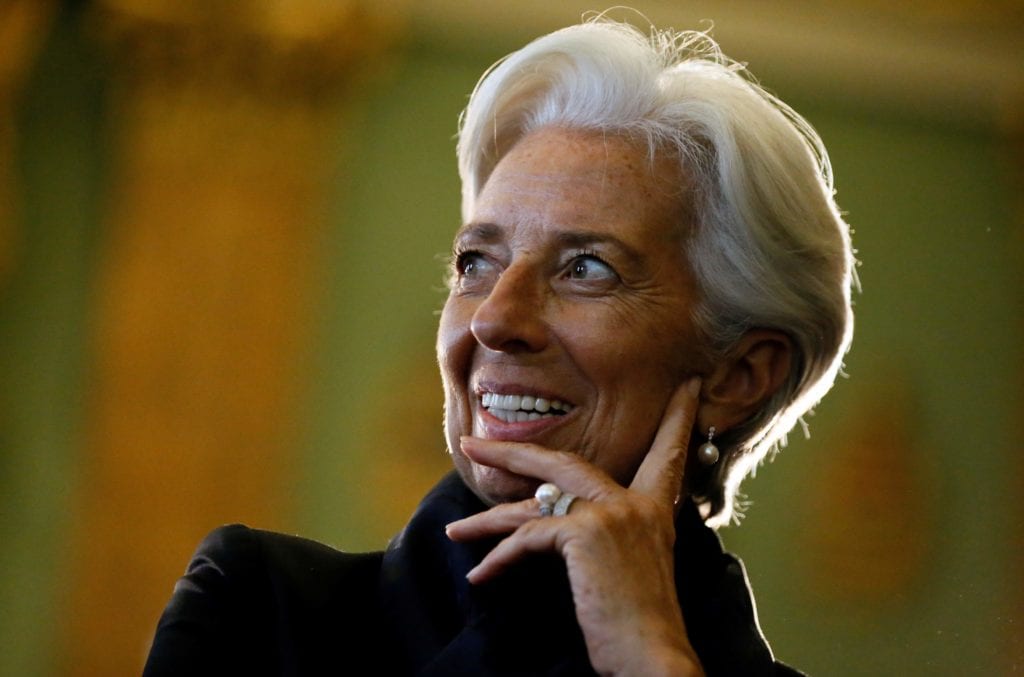

“To me, leadership is about encouraging people. It’s about stimulating them. It’s about enabling them to achieve what they can achieve – and to do that with a purpose.” — Christine Lagarde
Upon admission into the Paris Bar, Christine Lagarde started working for the international law firm, Baker & McKenzie, as an associate of the firm. Here at Baker & McKenzie, she specialized in Labor, Anti-trust, and Mergers and Acquisitions. French by birth and former Finance Minister for France, she became the first female Managing Director at the International Monetary Fund (IMF) in 2011. Christine Lagarde is known for championing the cause of the removal of subsidies in the oil sectors of several oil-producing countries as part of the IMF’s policies. She is known for her poise which was developed at an early age, her love for swimming and her unmistakable mane of blonde hair.
No. 7. Sheryl Sandberg


“Being confident and believing in your own self-worth is necessary to achieving your potential.” — Sheryl Sandberg
As Chief Operating Officer (COO) at Facebook, Sandberg has a very inspiring personality. She finished with a summa cum laude, graduating with her bachelor’s degree in economics from Harvard University. Sandberg also graduated with distinction from Harvard University where she attained her M.B.A. She worked as the Deputy Treasury secretary in the Clinton White House and later become his Chief of Staff. She worked as Google’s Vice President of Global Online Sales & Operations before transitioning to Facebook as COO. In her recently published best-selling book, “Lean In: Women, Work, and the Will to Lead,” which is a guide to her success, she talks about several admirable qualities which endear her to people and led to her international accomplishments.
No. 8. Indra Nooyi


“Leadership is hard to define and good leadership even harder. But if you can get people to follow you to the ends of the earth, you are a great leader.” — Indra Nooyi
The former CEO of PepsiCo, Indra Nooyi was in the 12th position in 2012 top 100 Power Women. Currently, she is listed 10th. Her then company, PepsiCo, is considered one of the world’s largest beverage industries. PepsiCo products are enjoyed globally with billions of their products being sold on a daily basis. PepsiCo has seen a lot of transformation under the tutelage of her leadership. Today, Indra is part of Amazon’s Board of Directors.
No. 9. Sonia Gandhi


“Together we can face any challenges as deep as the ocean and as high as the sky.” — Sonia Gandhi
Currently serving as President of the Indian National Congress Party since 1998, Sonia Gandhi’s political career grew after the assassination of her husband and the Indian Prime Minister, Rajiv Gandhi, in 1991. Sonia has occupied the seat of opposition in the Indian Parliament since 2004 and has reportedly made a case for her son Rahul Gandhi to return to Indian politics.
No. 10. Beyoncé Knowles
“Power means happiness; power means hard work and sacrifice.” — Beyoncé Knowles
Born on September 4, 1981, Beyoncé shot into global consciousness with Destiny’s child, an all-girls teen group, which topped charts and won various awards with several teen anthems. Beyoncé then stepped out on her own and became even more successful with her first solo project in 2003 titled, “Dangerously in Love.” Her marriage to Hip Hop icon, Jay Z solidified the couple as entertainment royalty. Beyoncé didn’t stop there. She went further to become one of the most prominent and most successful artists of all time while nurturing a family of three children. Beyoncé has a global army of passionate fans known as the “Beyhive.”
“The question isn’t who’s going to let me; it’s who is going to stop me.” — Ayn Rand (1905–1982), American novelist, philosopher, and screenwriter.
Women are not exempted from the capacity of becoming their best selves. They are not to be relegated to the background. There is so much discrimination against women that at times prevents them from reaching their maximum potentials. However, as we have seen in the list above, women can achieve notable feats in various spheres of accomplishments—against all odds to say the very least. When presented with the right opportunities, women thrive to attain and ascend to the heights of their full potentials.
As we have seen in this article, women are stepping out to do great things on a global scale. As we stipulated earlier, this list is not exhaustive. If you have suggestions of more women that are notably achieving greatness, please let us know in the comment box. However, as it stands, women will not be letting up anytime soon in advancing and progressing their careers as they push forward to accomplish estimable feats. Such stories of greatness as has been shared above will only motivate and spur the next generation of women to grow and aspire to greater heights. The curtains of stereotyping and prejudice are fast being torn down as the society is fast changing and advancing. The future is very bright for the womenfolk. Time and chance will reveal the next faces of notability.
Fact Check: We attempt for correctness and fairness in our work. If you see any information that is less than accurate, please contact us at info@oaekpost.com!
Photo Credits: Oaekpost.com does not claim credit for any photographs of the ten notable female figures. The sources of the photographs have been highlighted.
Leadership
How Do Women Lead?
Women make great leaders and they can make tough calls whenever the need arises. From a psychological perspective, women face the stigma of being classified as the weaker sex in need of protection. This stigma, as we will see via this article has been debunked.


When it comes to female leadership, there are always two primary debates. The first is if women make great leaders at all, and the second is an inquest on whether they can make tough calls should they find themselves in a leadership position that demands such a stance and style of leadership. The answer to these two debates is a resounding yes. Women make great leaders and they can make tough calls whenever the need arises. From a psychological perspective, women face the stigma of being classified as the weaker sex in need of protection. In the early 14th to 18th centuries, women were perceived to lack the capacity to make decisions. Hence all decision making was left for the men, until the late 19th century when women began to step up, debunking these perspectives. Since then, there has been a comprehensive transformation in the number of women leaders that are in many circles and in different professional inclinations. Women have stepped up and are now advancing the cause of leadership, and this trend is not going to let up in the future. Women will continue to emerge as great and successful leaders of tomorrow. The question this article will attempt to answer is, “How do women lead?”
History is replete with women such as the Virgin Queen, Queen Elizabeth I, who ruled England and Ireland for forty-five years. Women have had to make tougher calls than men in order not to be perceived to be weak. Queen Elizabeth I, gave an iconic speech at Tilbury and was noted to have said that “I know I have the body of a weak and feeble woman, but I have the heart and stomach of a king, and of a king of England too. Though the sex to which I belong is considered weak, you will nevertheless find me a rock that bends to no wind.” History has produced several notable women leaders of strength and intelligence such as Catherine the Great, the Empress of Russia who expanded the geographic reins of Russia and westernized the culture and society via Education, Art, and Literature. Cleopatra VII, an intelligent Egyptian Queen who played her cards to retain leadership in an era when rulers were mainly men. Queen Victoria, the second longest reigning British monarch who advanced the United Kingdom and Ireland on many fronts. Indira Gandhi was the first female Prime Minister of India. Golda Meier, former diplomat and first female Prime Minister of Israel. Margaret Thatcher was the first female Prime Minister of the United Kingdom. She was so assertive and strong as a leader that she was dubbed “The Iron Lady.” Benazir Bhutto became the first female prime minister of Pakistan. The list goes on and on of many past female leaders that exhibited great strength and intellectual prowess.


“The king may rule the kingdom, but it’s the queen who moves the board.” — D.M. Timney
Today, there a lot of notable women leaders in various fields of life endeavor. For instance, in the world of politics, we have the likes of Hillary Clinton, a former U.S. Senator, a former U.S. First Lady, a Women’s Rights Activist, and former Presidential aspirant who contested against the 45th President, Donald Trump. Angela Merkel is the first female Chancellor Germany and one of the architects of the European Union. Aung San Suu Kyi is currently the state counselor of Myanmar and winner of the 1991 Nobel Prize for Peace. Politician Nancy Pelosi became the first female Democratic leader of the House of Representatives and the first female speaker of the House. Liberian President Ellen Johnson Sirleaf is the world’s first elected black female president and Africa’s first elected female Head of State.
In the world of business, we have the likes of Mary Barra, Chief Executive Officer (CEO) of General Motors; Indra Nooyi, former CEO, PepsiCo; Marillyn Hewson, current chairman, and former president and CEO, Lockheed Martin; Isabelle Kocher, CEO, Engie (i.e., a French multinational electric utility company); Emma Walmsley, CEO GlaxoSmithKline, Rosalind Brewer, Chief Operating Officer (COO), Starbucks, just to mention but a few. In the world of Finance, we have the likes of Abigail Johnson, CEO, Fidelity Investments; Ana Patricia Botín, Chair, Santander Group, Banco Santander (i.e., Spain’s largest bank); Adena Friedman, President-CEO, Nasdaq; Pollyanna Chu, Hong Kong’s most prominent woman entrepreneur, Co-Founder, Kingston Financial Group, just to mention but a few. As we can see, women are fast rising to the higher/highest echelons of leadership in many circles.


Furthermore, in the world of Technology, we have the likes of Sheryl Sandberg, COO, Facebook; Susan Wojcicki, CEO, YouTube; Ginni Rometty, executive Chairman, IBM; Safra Catz, CEO, Oracle; Ruth Porat, Chief Financial Officer (CFO), Alphabet (i.e., parent company of Google); Lucy Peng, Ant Financial Services, Alibaba Group; Amy Hood, CFO, Microsoft; Roshni Nadar Malhotra, CEO, HCL Technologies, just to mention but a few. In the world of Media/Entertainment, we have the likes of Oprah Winfrey, Entrepreneur, Personality, Philanthropist; Bonnie Hammer, Chair, Cable Entertainment Group, NBCUniversal, and Comcast; Stacey Snider, Chairman and CEO, Twenty-First Century Fox; Margarita Simonyan, Editor-In-Chief, Russian TV Network (i.e., RT); Dana Walden, Chair-CEO, Fox Television Group, Twenty-First Century Fox; Beyoncé Knowles, Musician; Arianna Huffington, was the co-founder and Editor-In-Chief of The Huffington Post, which is now owned by AOL (NB., She stepped down from her role at Huffington Post. She presently chairs her new startup project, Thrive Global, that is focused on health and wellness information).
We have not even looked at successful women in Philanthropy/NGO, Automotive, Manufacturing, Energy, etc. The list goes on ad infinitum. From the examples above, we can see that women have had to stand up and prove they have as much right to lead nations and corporations as men. Women are not substandard or inferior—they are golden rubrics of charm, wit, and intellect in the leadership halls of fame. So, it is evident that women have fought and won the leadership battle over the centuries. It is pertinent then to look at how women lead and the difference between their leadership style and approach from that of their male counterparts.
“The day will come when men will recognize woman as his peer, not only at the fireside, but in councils of the nation. Then, and not until then, will there be the perfect comradeship, the ideal union between the sexes that shall result in the highest development of the race.” — Susan B. Anthony
Why Do Women Lead Differently?


Women can forgive the ignorance of those who wonder why women lead differently from the men. For one, the will to carry and nurture another human being for nine months requires special grace and strength. Women are receivers and nurturers of life. They receive life, conceive life, birth life, and nourish life. This remains an incredible banner of honor to womenfolk. During the process of conception, the woman develops a special bond with the child in the womb. From the biological purview, they nurture the child starting from the womb. After the woman gives birth to the child, she continues to nurture the child to adulthood, making sure that the child is provided for during the process of growth. In the past, a lot of people have looked at the fact that women may fulfill maternal roles in a negative light when it comes to leadership. In my opinion, this is not a position of weakness, despite the pervasive perception. It is a position of strength. Many times, women must wear many multi-functional hats as the nurturers of the home and as well as the wife, the mother, the career woman, the entrepreneur, etc. Their ability to multifunction in these various roles also adds a feather to their caps as remarkable women and the way that they approach leadership.
On the other hand, most women are also governed to a considerable extent by emotions and sensations. There is a positive and negative viewpoint to these sensations. From the positive perspective, their emotional and sensational sides allow them to be more flexible, personable, and understanding. Women are known to have a higher level of emotional intelligence (EI) (i.e., they are more empathetic in nature—they psychologically identify with the feelings, thoughts, or attitudes of others). Understanding how people feel allows women to be able to direct the emotions of others towards aligning with the collective needs of the group. Having a high EI is a positive and beneficial leadership asset that allows women to climb quickly to distinguished positions in organizations. From the contrary viewpoint, their flexible, agreeable, and understanding nature could be misconstrued as weakness, were in the actual sense, it is not. Men and women are not the same. Biologically speaking, there is no way a woman is comparable to a man. Women don’t even think the same way as men. They are wired entirely differently. Beyond the biological influence on leadership, significant sources point to the brain factor as one of the differentiators.
It’s a thing of the Brain


Researchers have discovered that the male and female brain operates in slightly different ways. This difference determines how each behave, and in the context of this article, how they lead as well. The brain has two hemispheres, which are the left and right. Research shows that men are more inclined to use the left side of the brain. They are usually more logical in their thinking process and how they handle issues. Women, on the other hand, generally adopt both hemispheres of the brain in their thinking process. The right region of the brain governs intuition more. Hence, they can draw from both hemispheres of the brain, which is advantageous when drawing conclusions. They can be both logical and intuitive at the same time. Most women tend to be more intuitive than men. They have that gut-feel-factor or sixth-sense factor in leadership. They might find it easier to see things and situations more clearly and on a grander scale than the men. Men, on the other hand, would want to act and make decisions based on facts and what they see at the moment and not on intuition. As leaders, women can see the bigger picture and perform based on what can potentially happen in the future, compared to men who would mostly be concerned about removing what’s currently in the way of success. This explains why heterogeneity in leadership is beneficial to the growth of organizations.
How Do Women Lead Differently?
First, women are transformational leaders. Women typically exhibit transformational leadership styles, compared to men who are more transactional in their approach to leadership. In transformational leadership, women attempt to transform the self-interest of their subordinates into the interest of the group.1 Women as leaders are more involved in activities rather than merely showing the way. Women are doers. They get involved and can be found helping subordinates to recognize their inner strength and the need for them to step up to the next level of their leadership growth. Women readily offer themselves up as role models, especially to those of the same gender who may feel intimidated by those of the opposite sex. The idea is to make everyone, both men and women, become better versions of themselves via the process of interactive leadership. Many organizations that are led by women also offer a more conducive work environment and sometimes, more remuneration for their employees. Work-Life balance is at the top of their priorities. So, how do women achieve this interactivity in organizations via this style of leadership?


Women achieve this process of transformation via interactive leadership. To elicit interaction, women make efforts to encourage participation and share power and information with their subordinates.1 Women in trying to evoke the intercommunication and inclusivity of others try to make them feel more part of the organization by creating a sociable, relaxed, and conversational atmosphere. In such ambiance, arising disparities are addressed, and cooperative, sustainable solutions are reached. The downside is that it can open doors to criticism and could easily be misconstrued as not having answers.1 Power and information sharing is a two-way traffic communication process flow. It creates a climate of trust between the leadership and the followers. This allows followers to become involved in the engineering of solutions to problems. Information sharing can just mean being candid about issues concerning work. The downside of power and information sharing is that it opens the portals of leadership vulnerability and being ultimately rejected or a sign of naivety.1 One of the upsides of sharing power and information and encouraging participation is that it makes others feel important. They also energize others by being enthusiastic. Their use of interactive leadership has deep roots in socialization, a skill that comes to them distinctly and akin to their nature.
Second, women are more empathetic leaders than men. Women have the motherly genes, although some women with opposing ideologies may beg to differ. However, a large percentage of women lean towards nurturing and empathy more than men. Especially in an era of alpha males, one might find women to be more empathetic towards their followers. This feeling of compassion can be traceable, for instance, to the past and current realities that have surrounded women. Women have been subject to exclusion from a whole lot of things for many centuries, because of their gender. However, now that the spaces are starting to open for female inclusion in leadership positions, women can generally approach matters from a “what if it were me” perspective. They listen. Women behave this way because they understand what it means to be shut out and excluded from certain things. Women understand prejudice and the feeling of being judged even before they have had the chance of proving themselves. Women understand the reality of being considered a minority in the leadership macrocosm. By this, most women leaders connect more emotionally to their subordinates by trying to foster a sense of inclusivity within the team. In some cases, a female leader can be considered a glorified teammate because there is barely any difference between both parties in the way they relate to each other.


“Every girl and every woman has the potential to make this world a better place, and that potential lies in the act of thinking higher thoughts and feeling deeper things. When women and girls, everywhere, begin to see themselves as more than inanimate objects; but as beautiful beings capable of deep feelings and high thoughts, this has the capacity to create change all around. The kind of change that is for the better.” — C. JoyBell C.
As indicated earlier, there are often debates as to who makes a better leader between men and women. Well, when we consider leadership styles, transformational styles, that embraces interactive leadership, tend to produce more advantageous results because of the inclusion that it offers subordinates and ultimately a harmonious work environment that ensues, all things being equal. However, it is worthy to note that there are also institutions that thrive better under a transactional leadership style. Are there any winners? Not necessarily. I would construe that the womenfolk and menfolk are both winners. The reason is being that the “best” leadership style is highly dependent on the organizational context that one finds himself or herself. However, we should have this at the back of our minds that the interactive leadership style is not solely synonymous to the womenfolk, there are also some men that operate under this leadership style. There are also women and men that merge transformational or interactive leadership with transactional, situational, charismatic, servant leadership, and other leadership styles. Hence, it will be erroneous to draw the conclusion that interactive leadership is solely “feminine.” There are women out there who have climbed the proverbial corporate ladder by adopting the command-and-control or transactional leadership model.1
Hence, the essence of this article is not to pour fuel into the competitive flames of who is a better leader, the man or the women, that is already raging in many circles. However, the core of the column is, first, to celebrate the strength of growing women leadership in many circles. Women leaders are rising in various cliques of human endeavor. Second, to celebrate the strength of womanhood and the methodology that that they bring to the leadership macrocosm. They are largely transformational leaders who exhibit a lot of empathy with a high Emotional Quotient (EQ) or EI. Third, it is also to instill a level of confidence in the up-and-coming generation of women to be confident in the leadership style that they exude. We must encourage our young girls by letting them know in their youth that they can attain greatness in leadership. Fourth, globalization is increasingly creating the need for a more sociable and participative work environment, and interactive leadership may be the wave of leadership in the future. Women can help forge the landscape of tomorrow’s leadership practice. Fifth, the article is a call to end the prejudice against women leadership and the stereotyping that often excludes them from leadership. It is a call to break the proverbial “glass ceiling” that bars women from rising to executive level roles in organizations. It is a clarion call for a more diverse workforce. That change has come, that change is now. Finally, it is the attempt to expand the definition of effective and sustainable leadership. So, as we celebrate men in positions of leadership, let us also celebrate womenfolk in various leadership roles as we understand how women lead.
References
- Wren, J. T. (1995). The leader’s companion: Insights on leadership through the ages. New York, NY: The Free Press.
Leadership
The Way of the Servant Leader
In the words of a J. Carla Nortcutt, “The goal of many leaders is to get people to think more highly of the leader. The goal of a great leader is to help people to think more highly of themselves.” That is the foundation of Servant Leadership, and the way of the Servant Leader.


Robert K. Greenleaf came up with the Theory of Servant Leadership. After Robert read the work of Hermann Hesse, Journey to the East, he came up with this theory. The story focuses on a central figure, Leo, a servant to a band of men on a mythical journey. Leo did the menial chores of the company. However, sustaining them with his presence, spirit, and song. After Leo disappears, disarray sets in and the expedition team disbands. The narrator of Hesse’s Journey to the East after some years of wandering finds the long-gone Leo in an Order. To his amazement, he discovers that this Order sponsored the long-disbanded expedition and Leo the servant, was the titular head of the Order.
Can a leader be a servant as well? From the story that birth this theory, we can see the possibility of this happening. In the perception of Robert K. Greenleaf, he believes the validity of this theory. The ways of the servant leader are as follows:
1. The Servant Leader is first a Servant


As we see in the person of Leo, there is first the natural inclination to serve, not by compulsion but by choice. Every servant leader must have this natural lean towards service. The way of servant leadership is one which is devoid of any preoccupation to grab power or material possession. The initial proclivity to work is the genesis of such leader’s aspiration to want to lead. Serving is the first order of the day before inclining to lead the pack.
2. Meeting the needs of others is the Servant Leader’s first priority


The Servant Leader’s paramount goal is to satisfy the highest priority needs of people. The way of the servant leader is to make sure that those they are serving are growing as individuals. He/she, the servant leader, aims to see growth in those they are serving in the place of health, wisdom, freedom, autonomy, with a growing self-inclination to become servants. Servant leaders work towards the cessation of deprivation of the underprivileged in the society. Hence, the way of the servant leader is to meet the needs of others first before they commence thinking of their own needs.
3. No job is too menial to the Servant Leader


No job is too menial or too small for the servant leader. Leo in the Journey to the East story was comfortable doing the menial duties of the team. For the servant leader today, no job should be too menial for the servant leader. One can see this leadership methodology in practice in the training of a Starbucks Store Manager. During the training process, the Store Manager at Starbucks must first learn to do all the duties of the barista and must be comfortable doing so. That is the way of the servant leader. You must be able to do and be comfortable with doing duties you expect your followers to do for you. No job is too menial for the servant leader.
4. Humility is the sail of the Servant Leader


The sail is what drives a sailboat through the restless oceans. The sail catches the wind, and it pushes the boat forward—without a sail, you cannot have a “sail-boat.” Humility is analogous to the sail of the sailboat. Humility is the sail that makes the servant leader who he/she is. In the absence of humility, it is hard for servant leadership to exists as pride will stifle the life out of servant leadership. We can find the best description of humility as the sail of the servant leader in the Holy Writ’s book of Luke 22:26 that “The greatest among you should be like the youngest, and the one who rules, like the one who serves.” Humility is a core trait of the genuine servant leader.


There are several iconic examples of servant leaders. Nelson Mandela’s life passion was to see equality become the mantra of everyday living in the country of South Africa. He passionately sought after it even to the point of putting himself at risk and going to jail in his pursuit to see the cessation of apartheid in South Africa. Martin Luther King, Jr. is another exemplary servant leader. His pursuance to see the eradication of racism and the inequality that it breeds, became his life mission. His speeches are resounding reminders of his equality pursuit for the African American during the Civil Rights Era of the United States. Sometimes, the pursuance of the servant leader can become deleterious for the leader in question. For instance, Martin Luther King, Jr. paid the ultimate price with his life pursuing his noble ideals.
Other notable servant leaders where Mahatma Gandhi, Mother Teresa, Albert Schweitzer, and the ultimate servant leader of all being Jesus Christ. In every instance of His life, He sought to ensure that the needs of all that he encountered. In the Holy Writ’s book of Mark 10:44-45, He asserts that “Whoever wants to be first must serve the rest of you like a slave. Follow my example: Even the Son of Man did not come for people to serve him. He came to serve others and to give his life to save many people.” Hence, servant leaders are not power mongers who throw their weight around when they acquire some modicum of power. The way of the servant leader is selfless service, care, and humility. We need more servant leaders in organizations today. For those that want to become servant leaders and are looking for a primer to direct them in this style of leadership should look to opus, Servant Leadership by Robert Greenleaf.






























That is a very good tip especially to those fresh to the blogosphere.
Simple but very precise info… Many thanks for sharing this one.
A must read post!